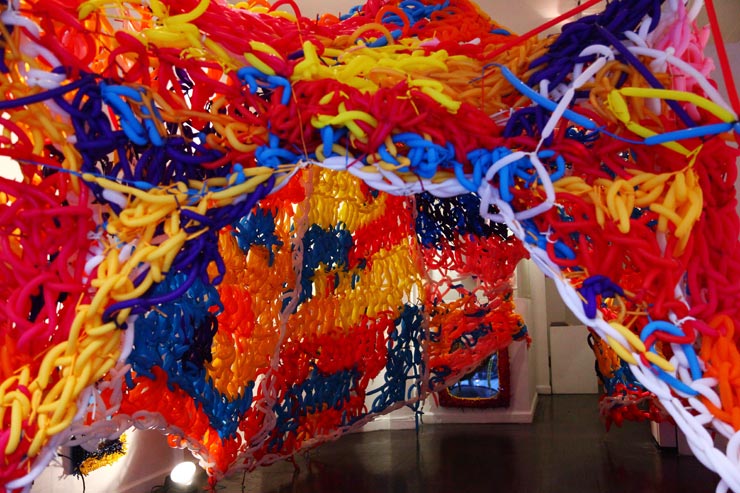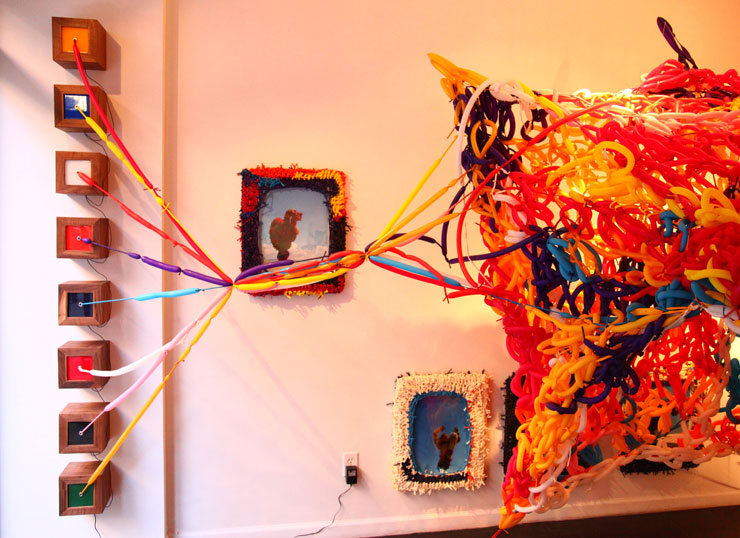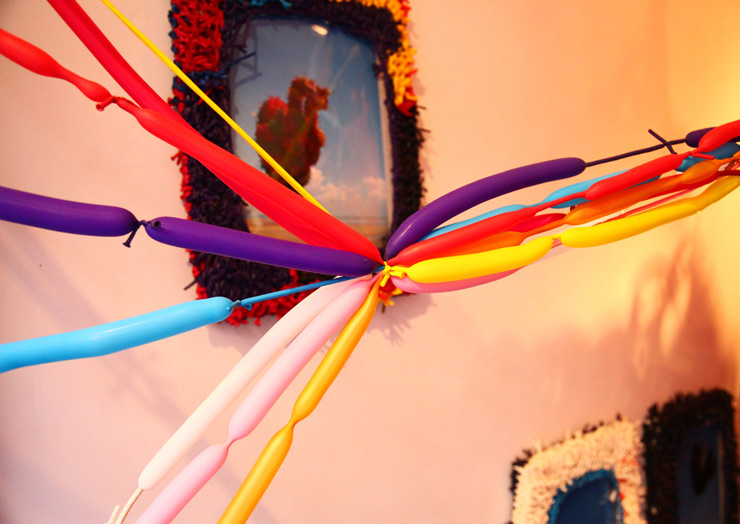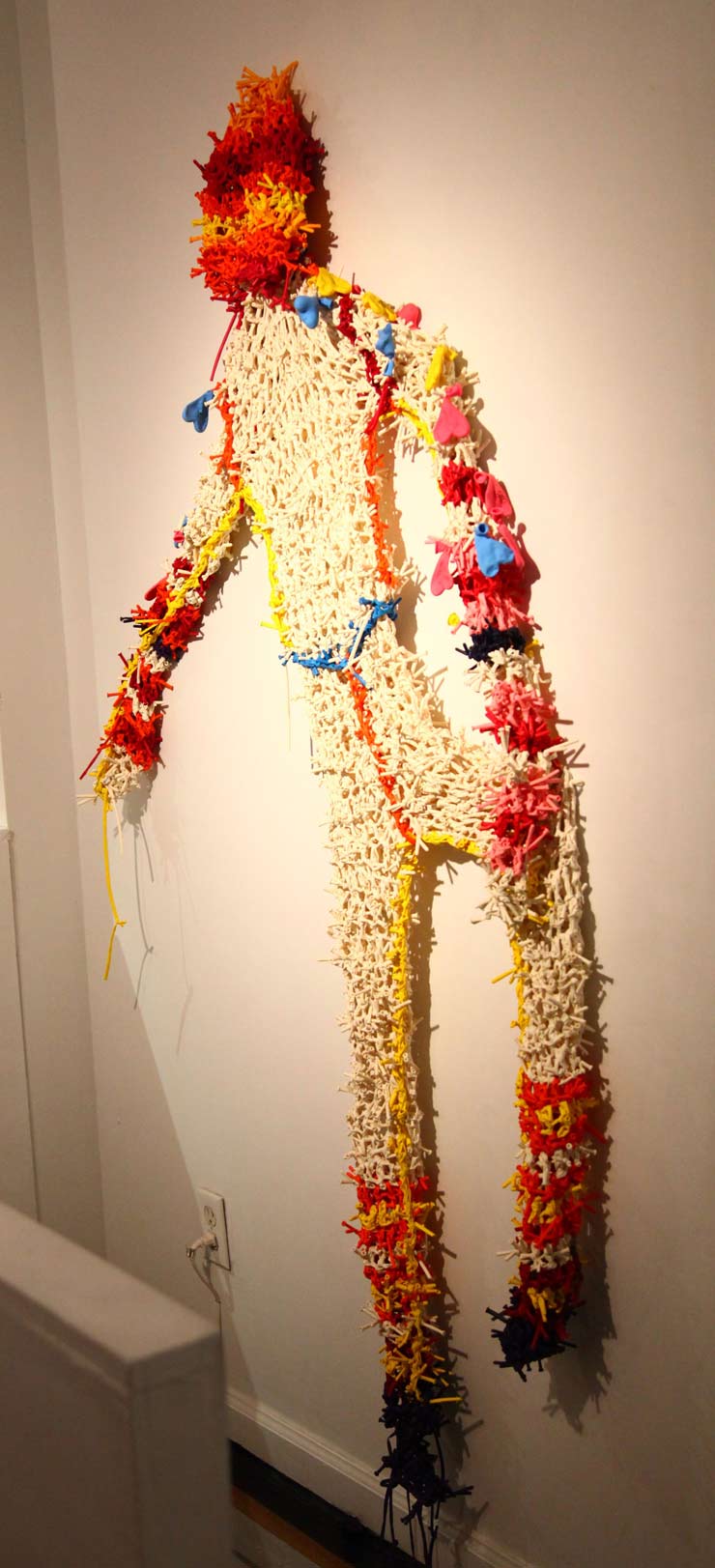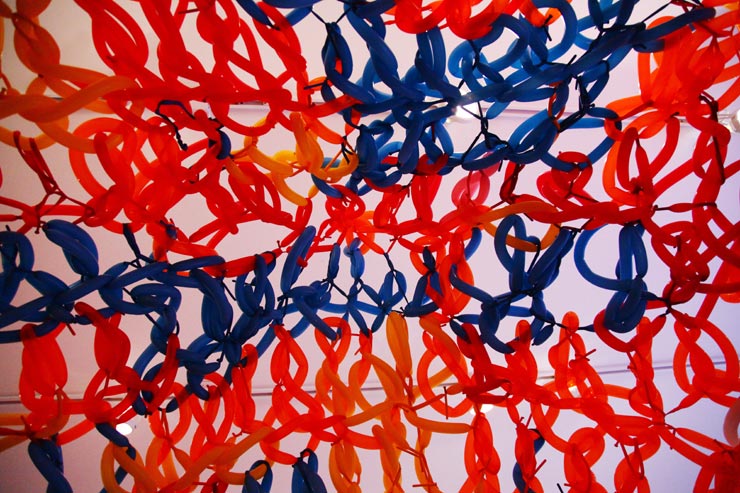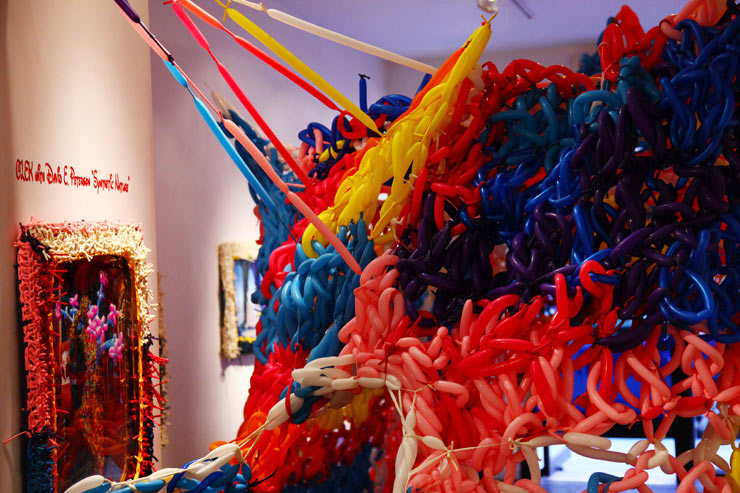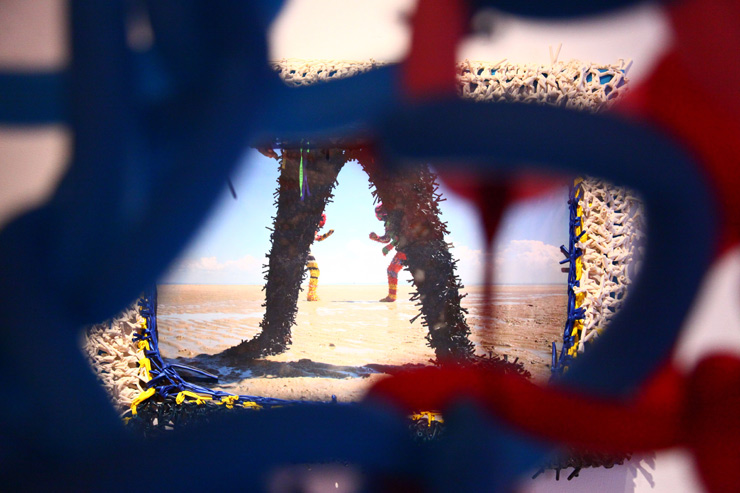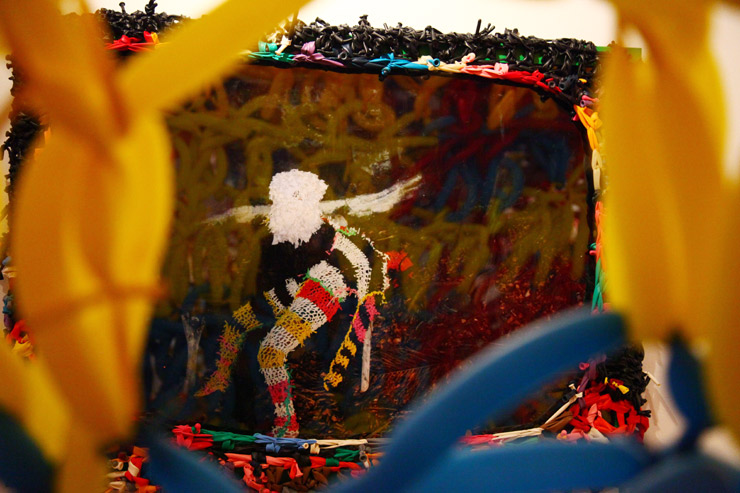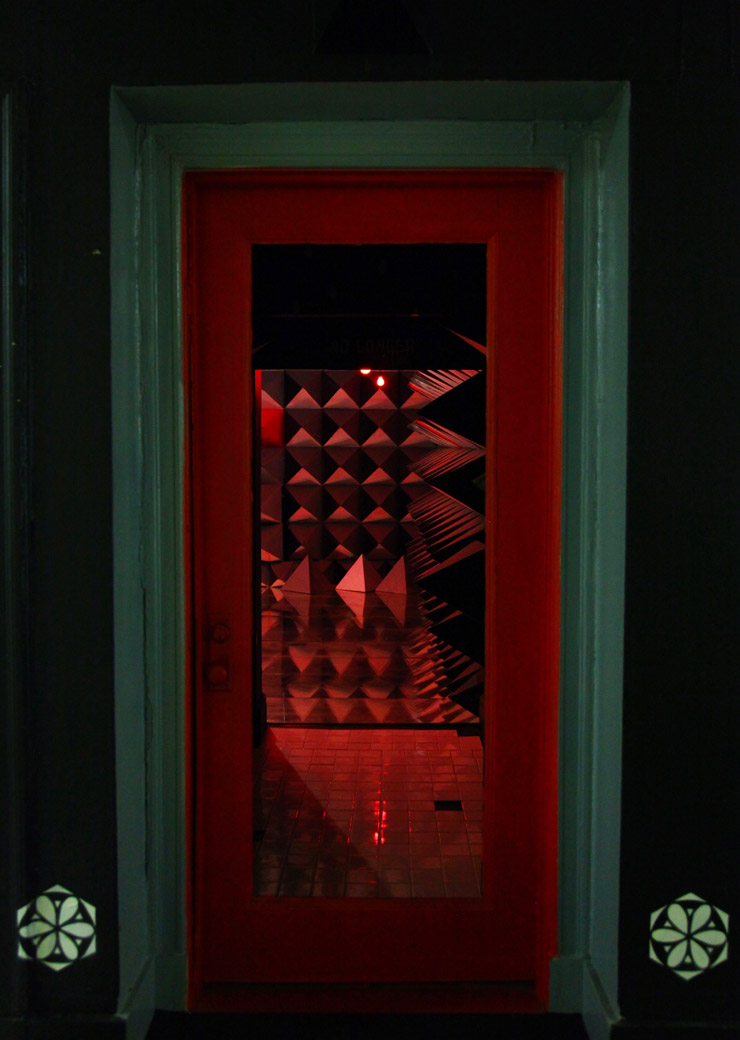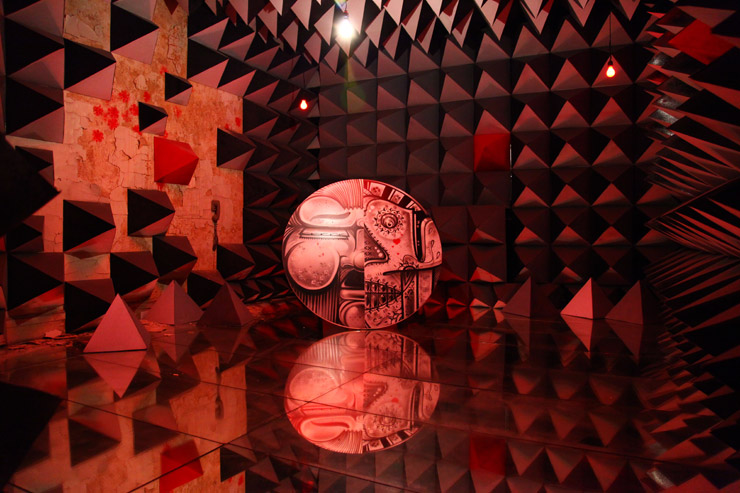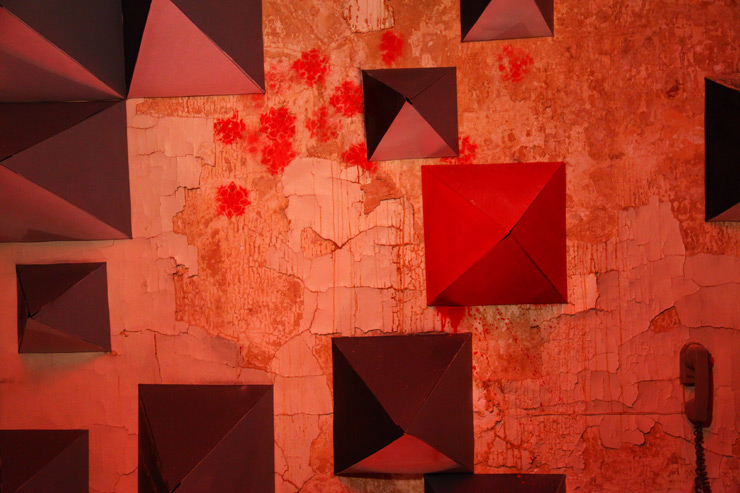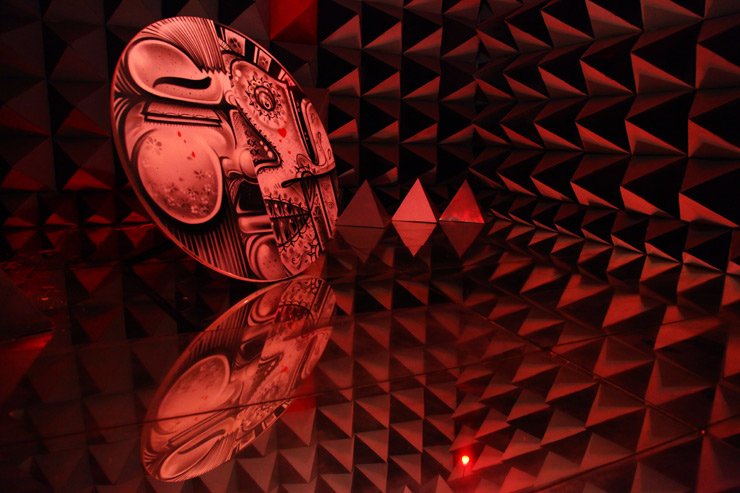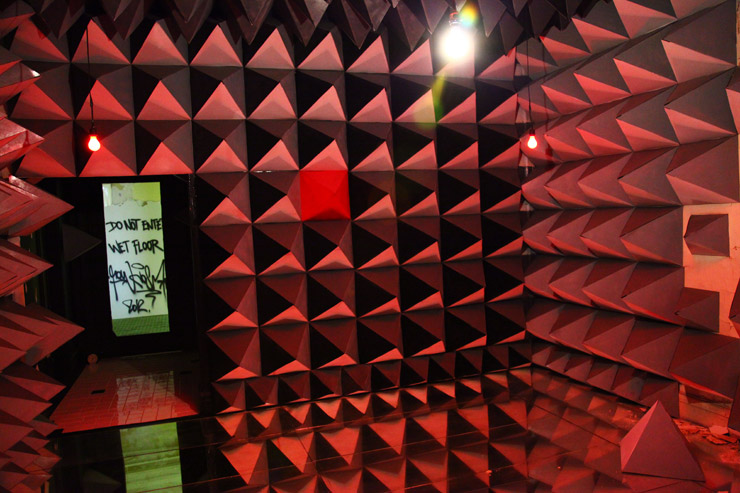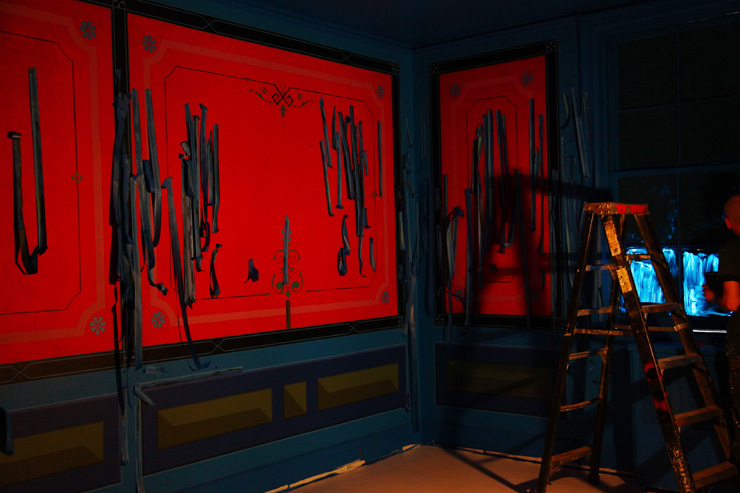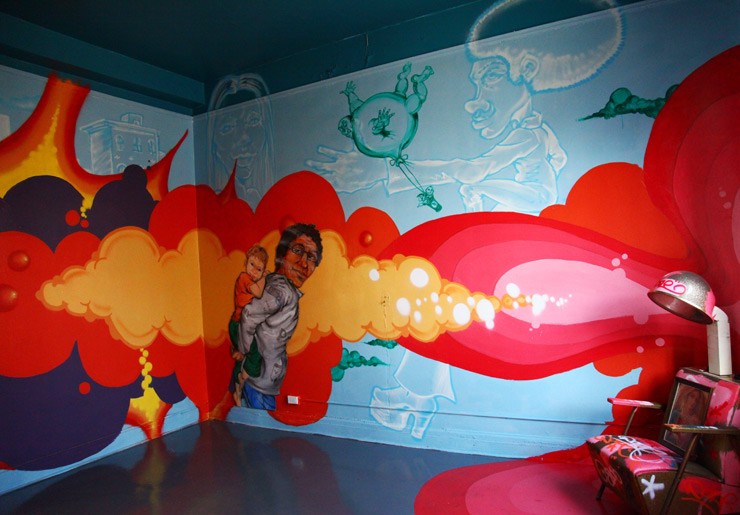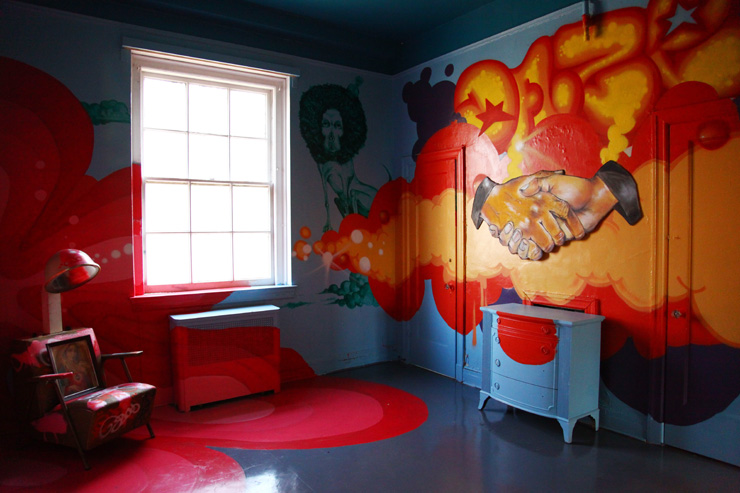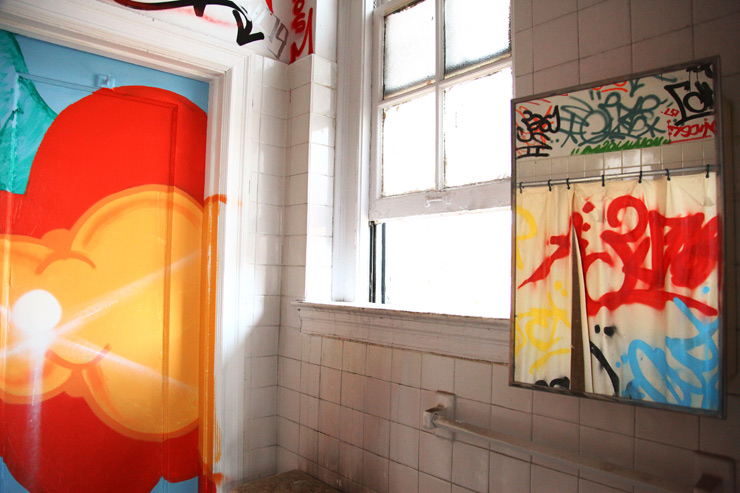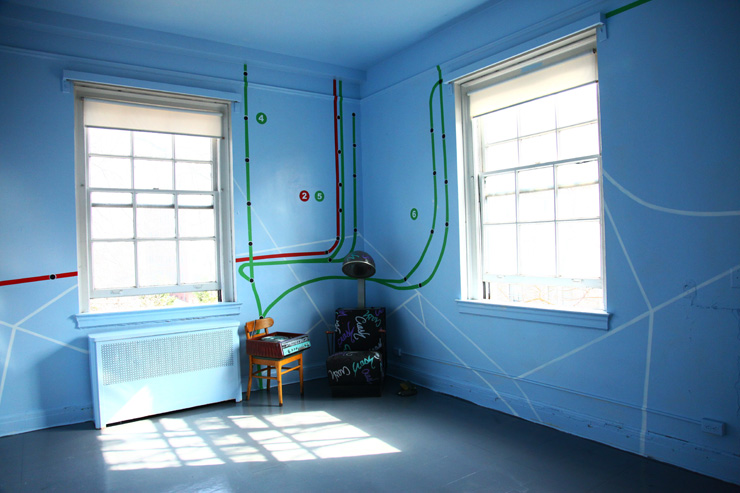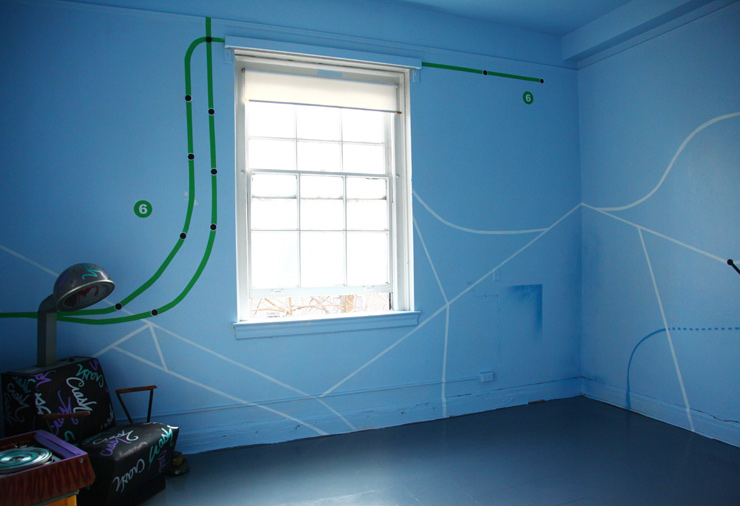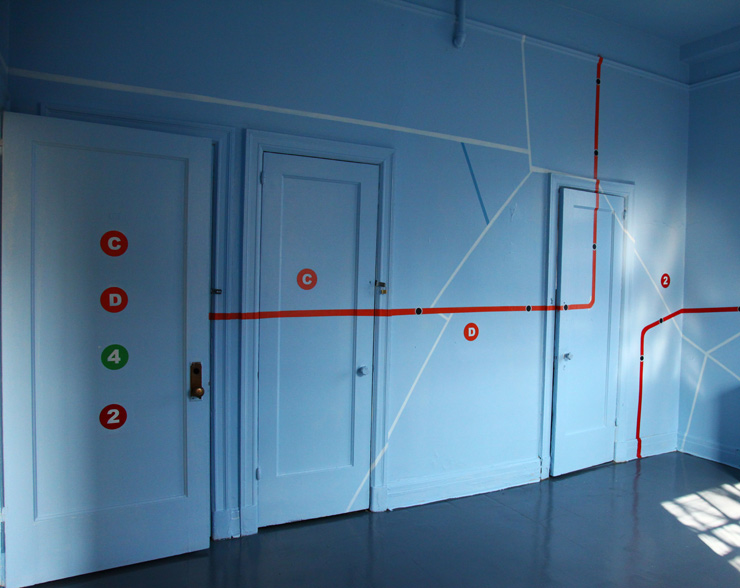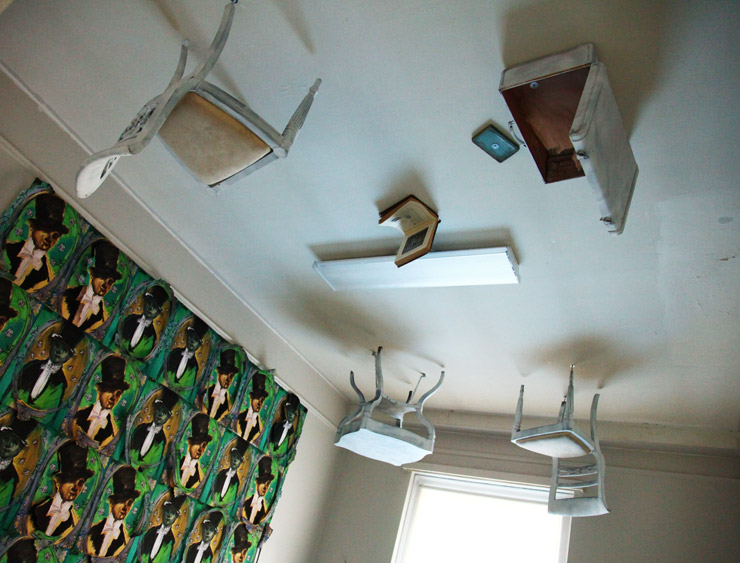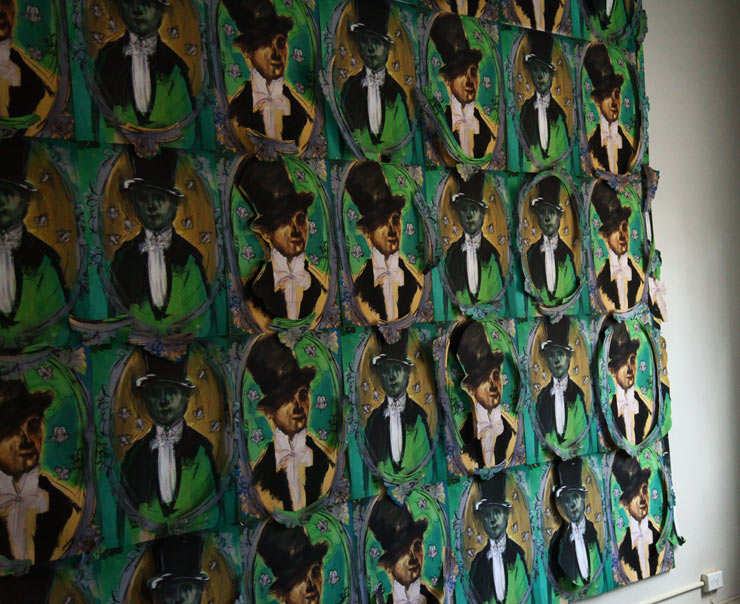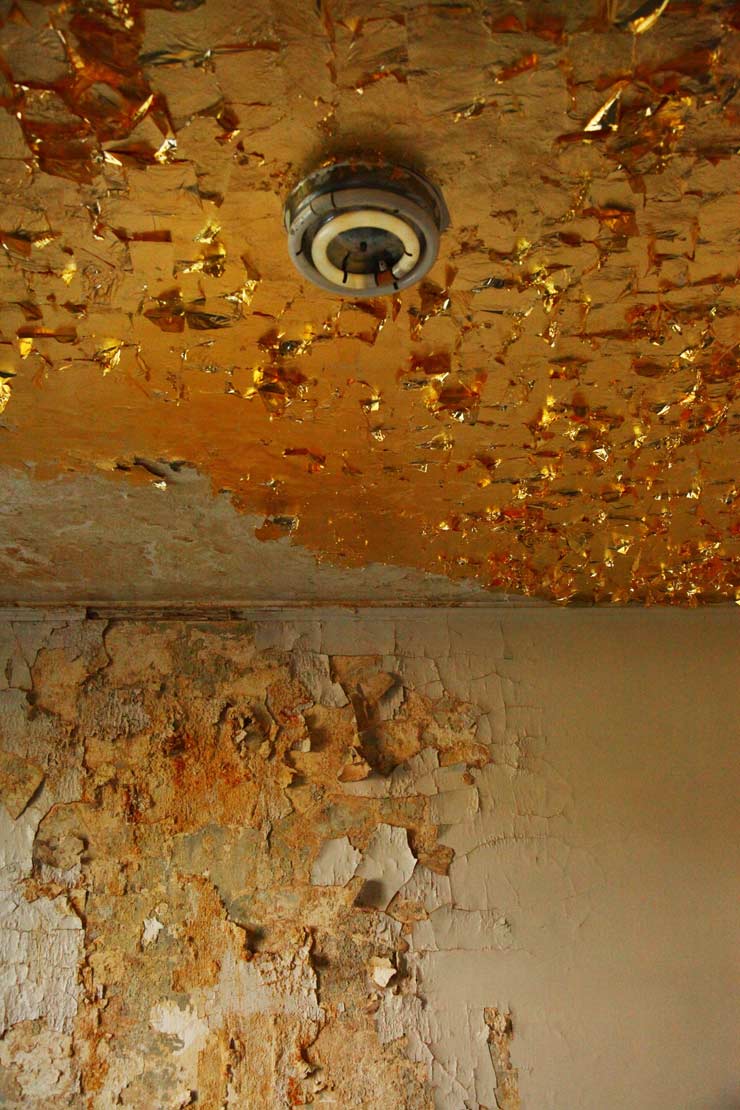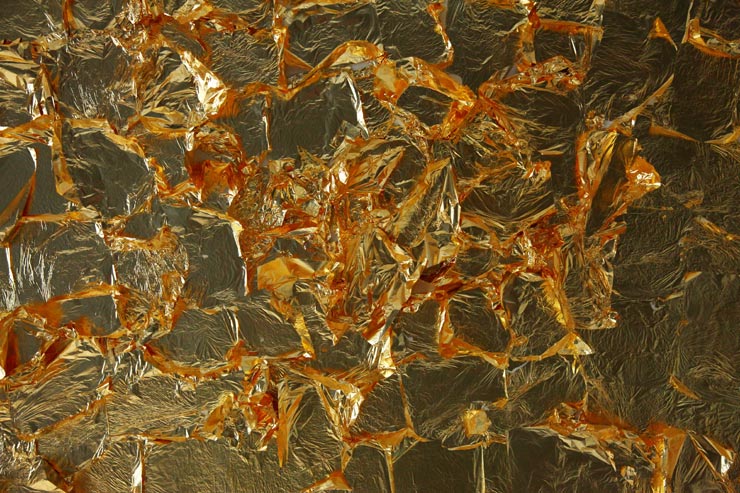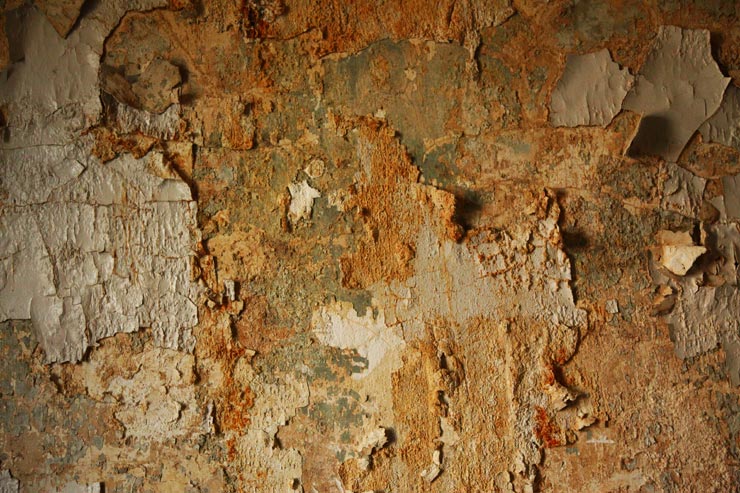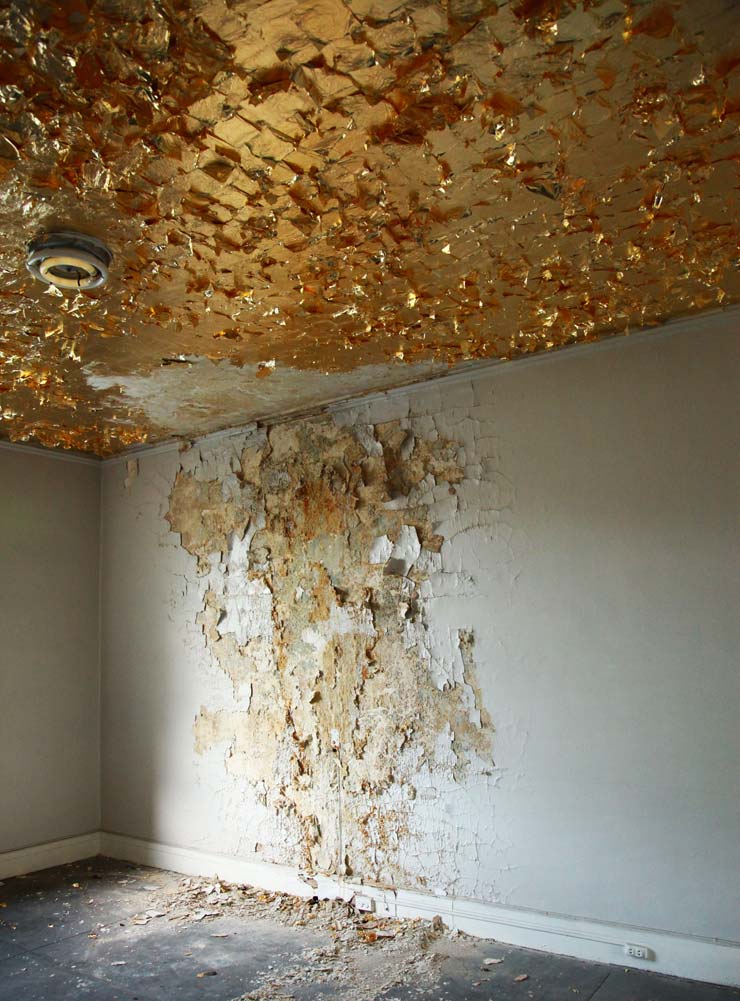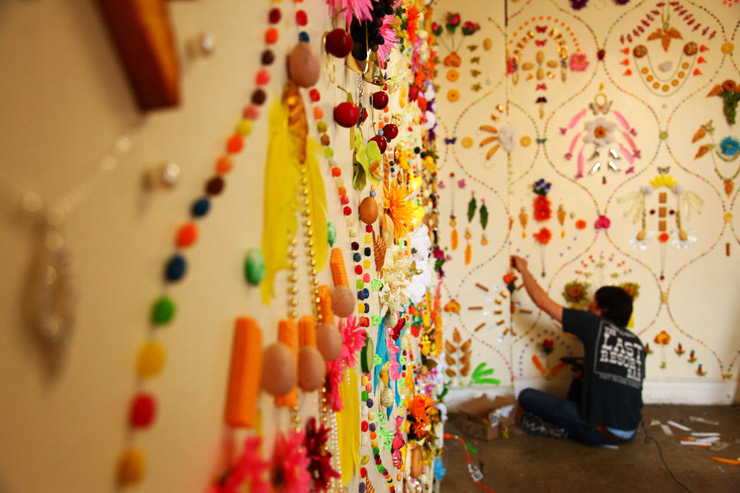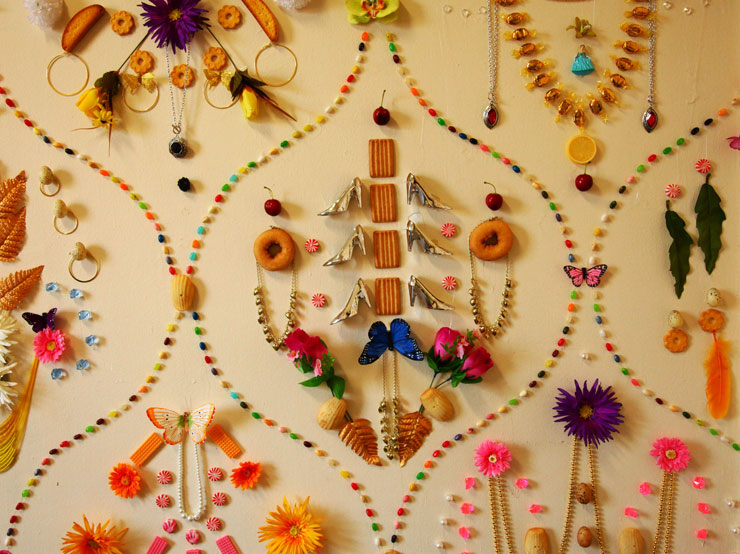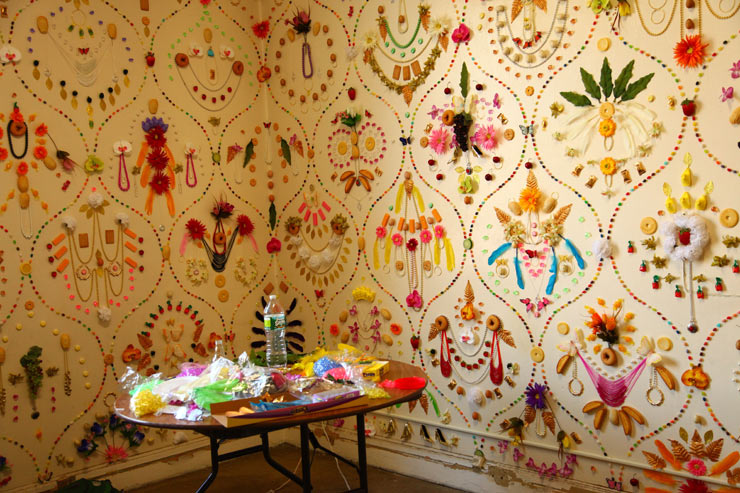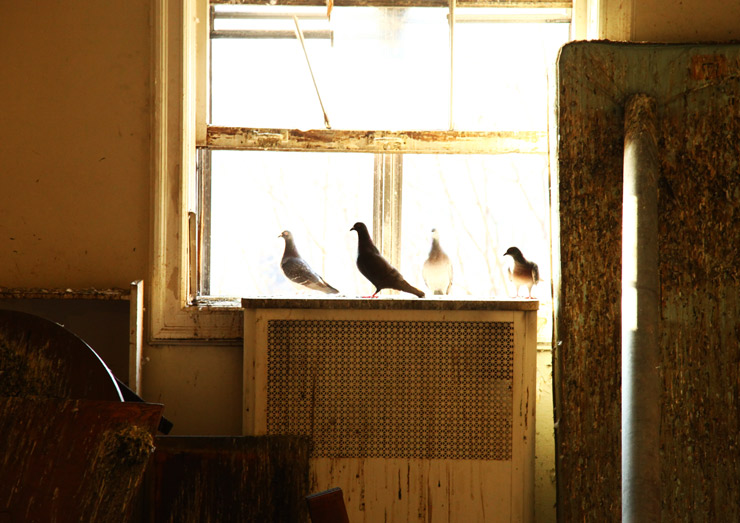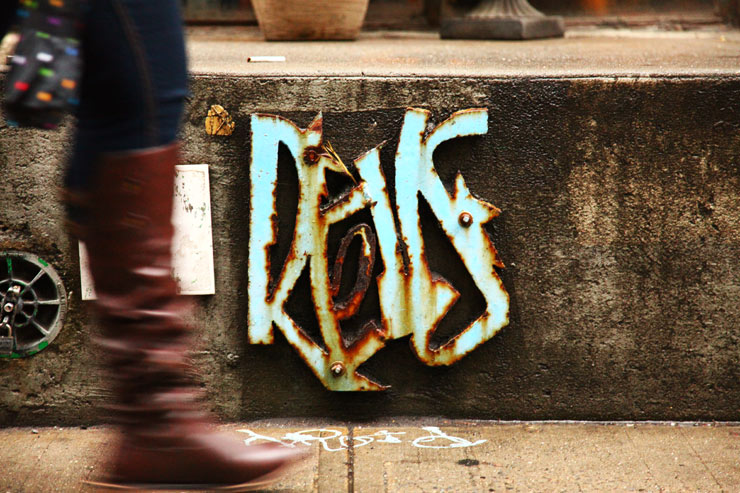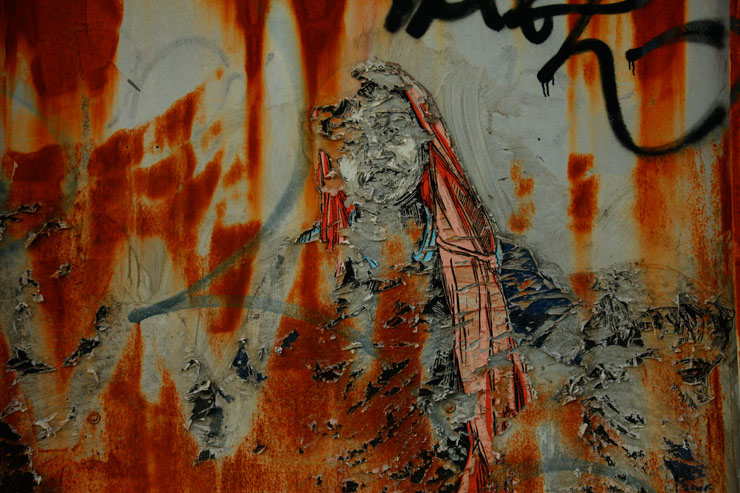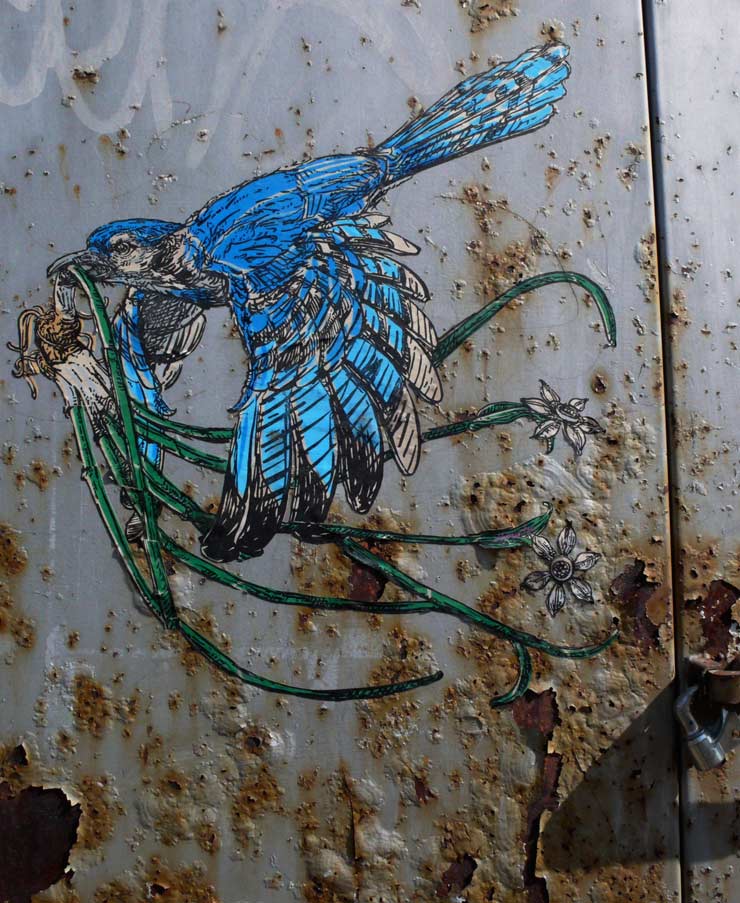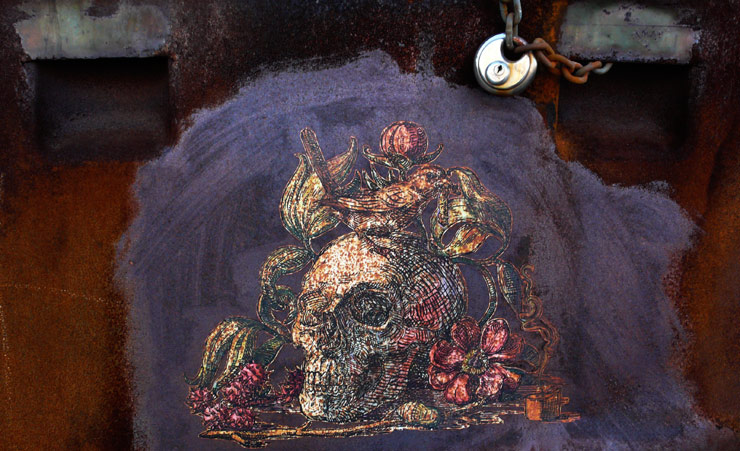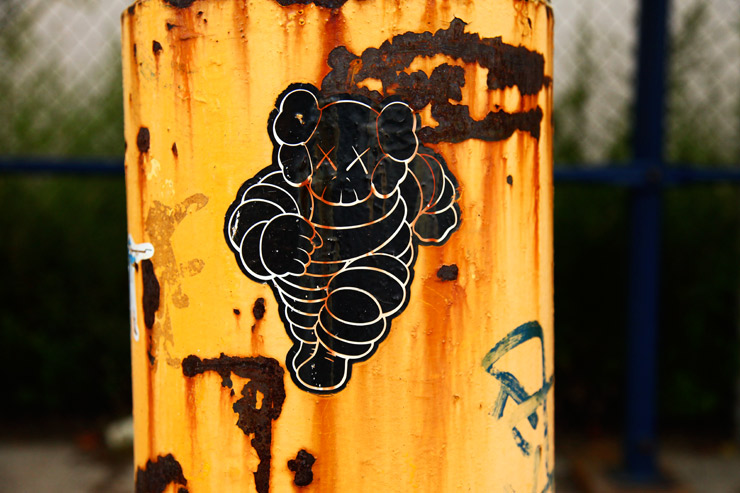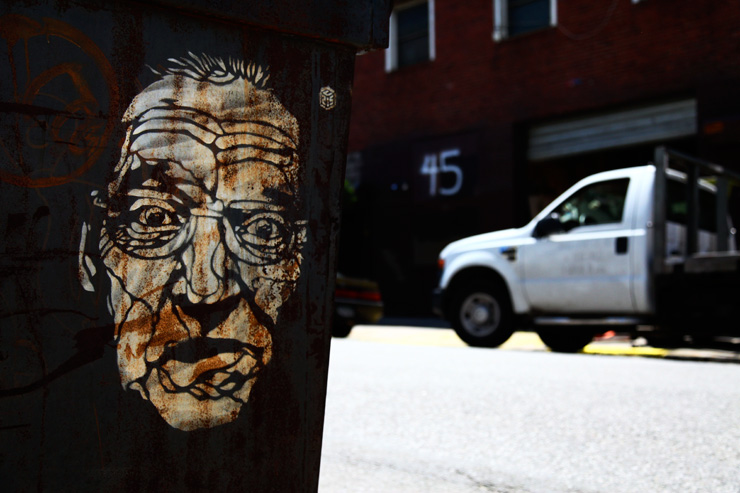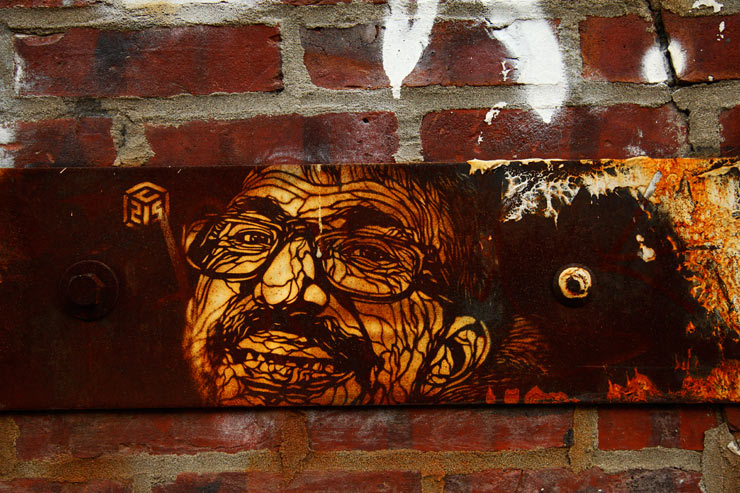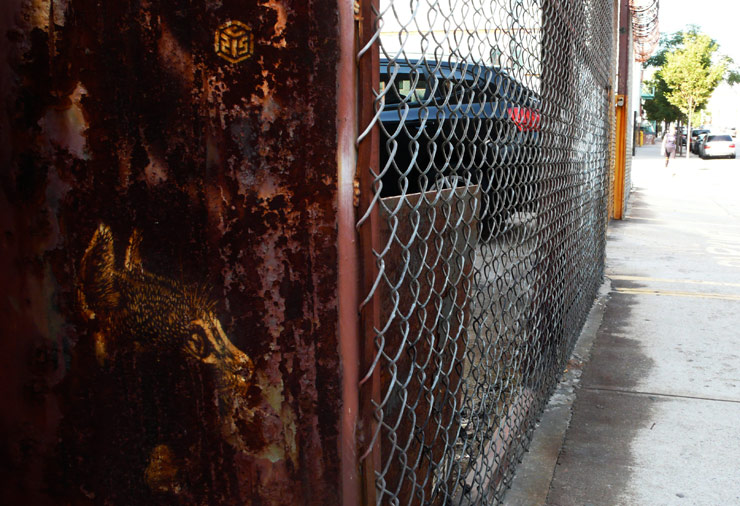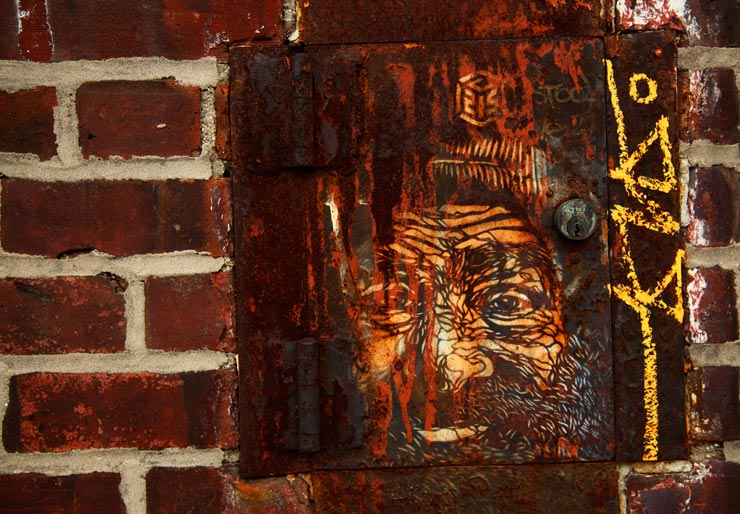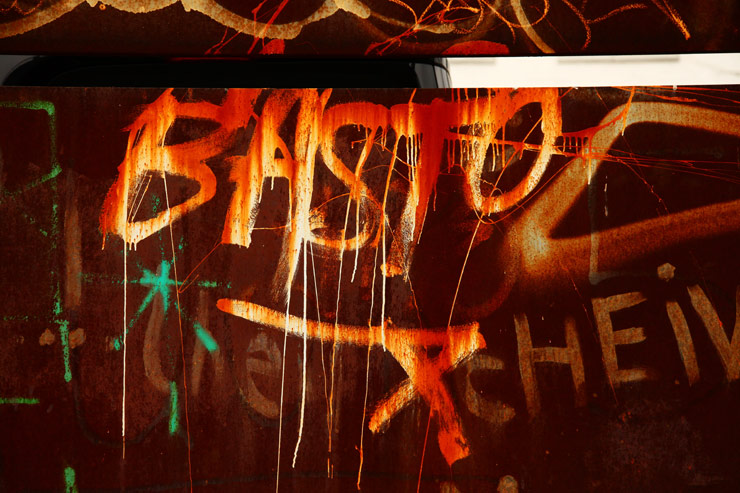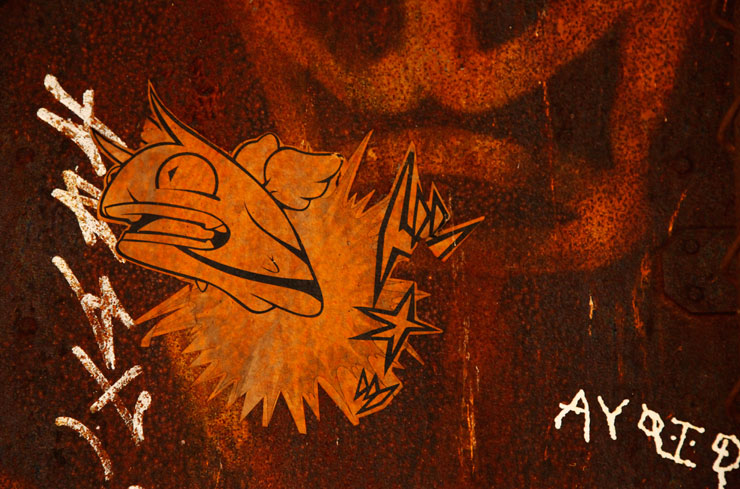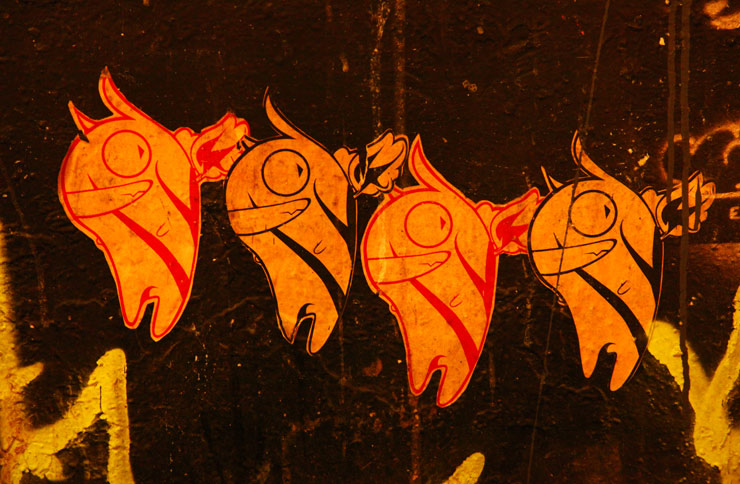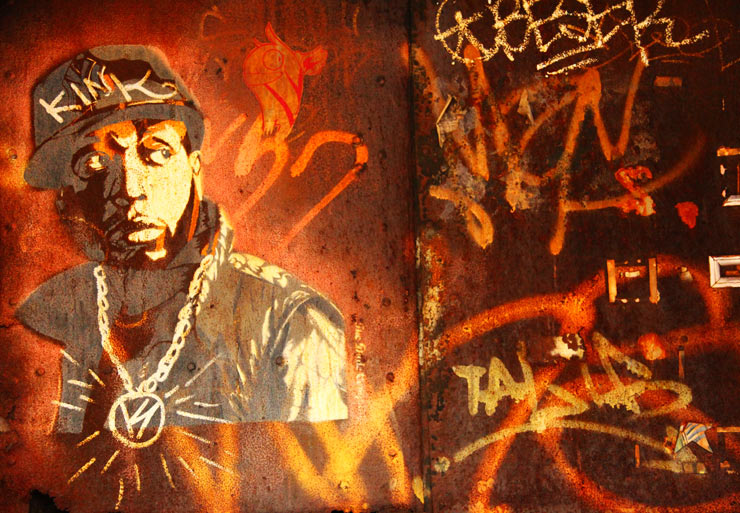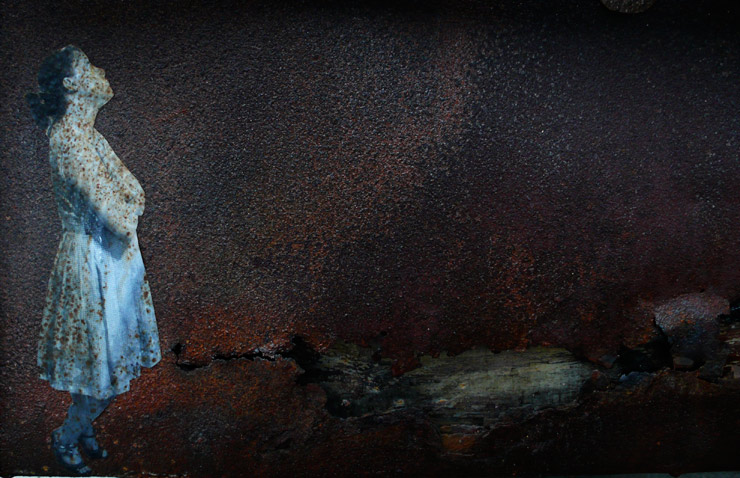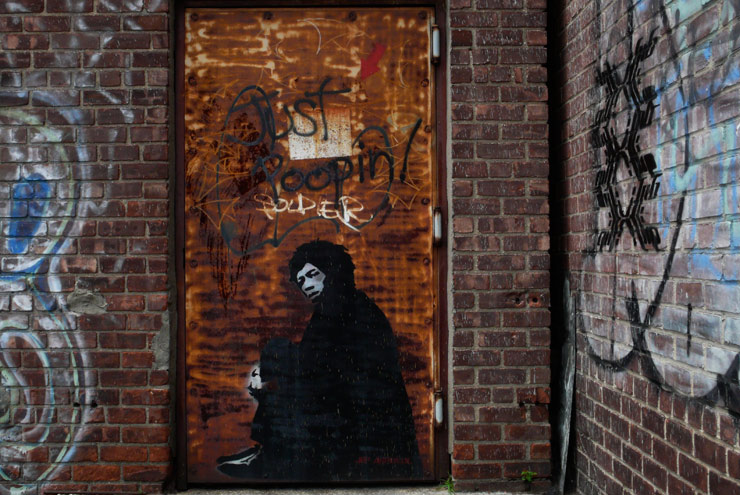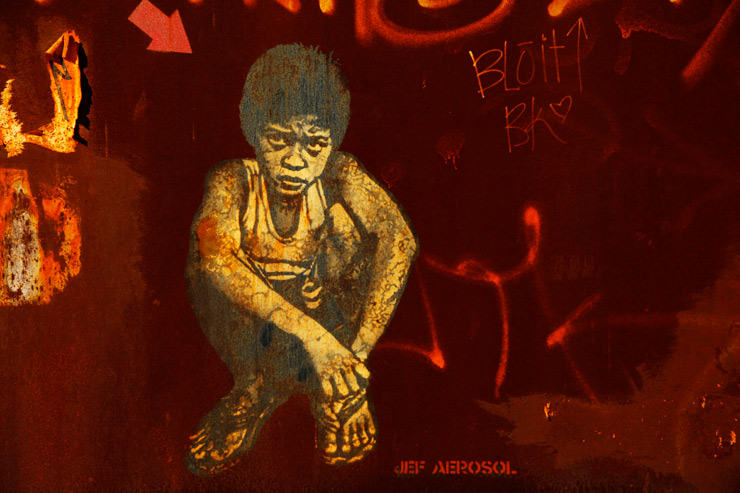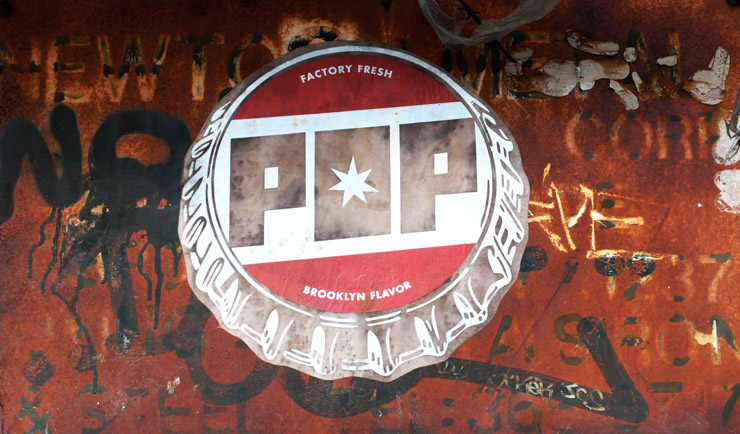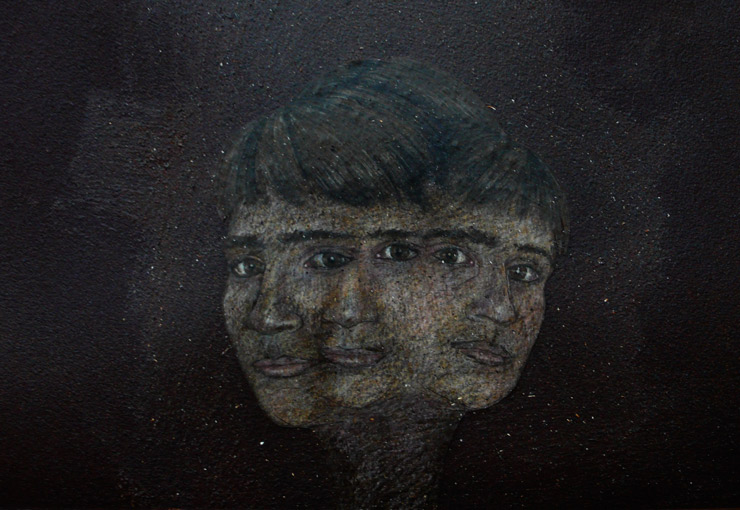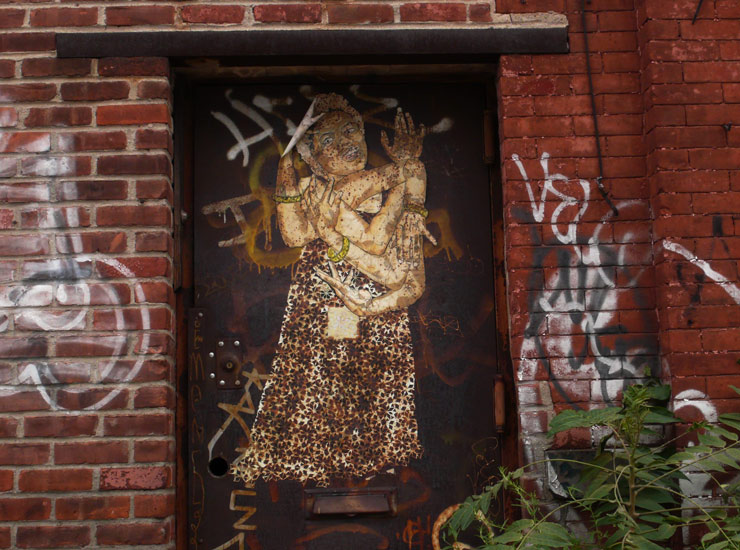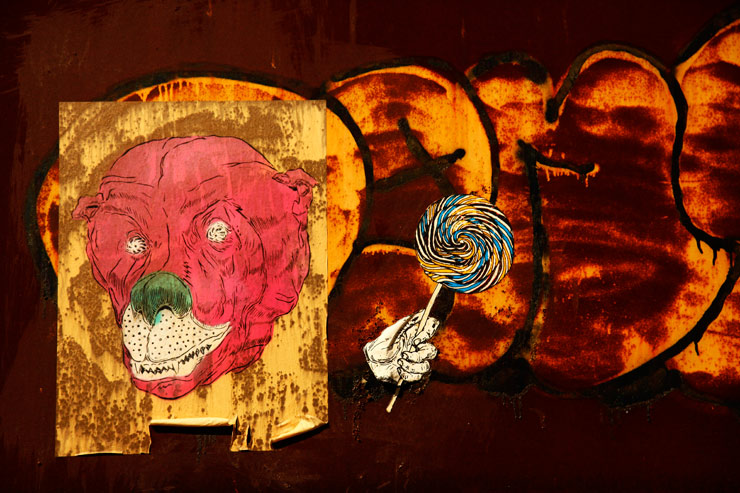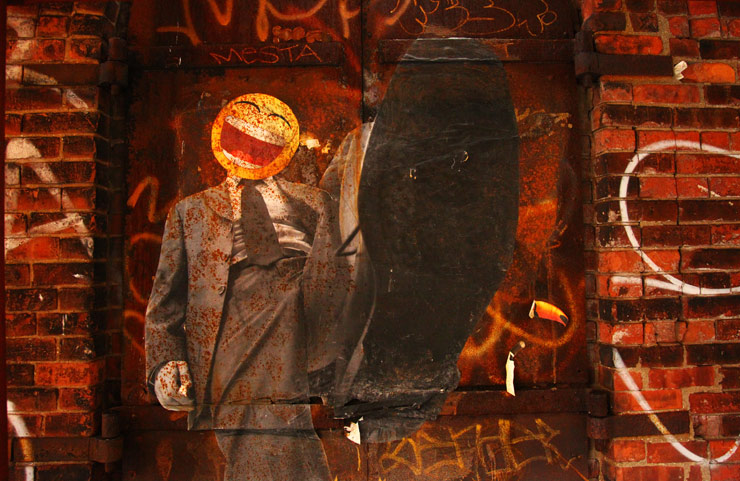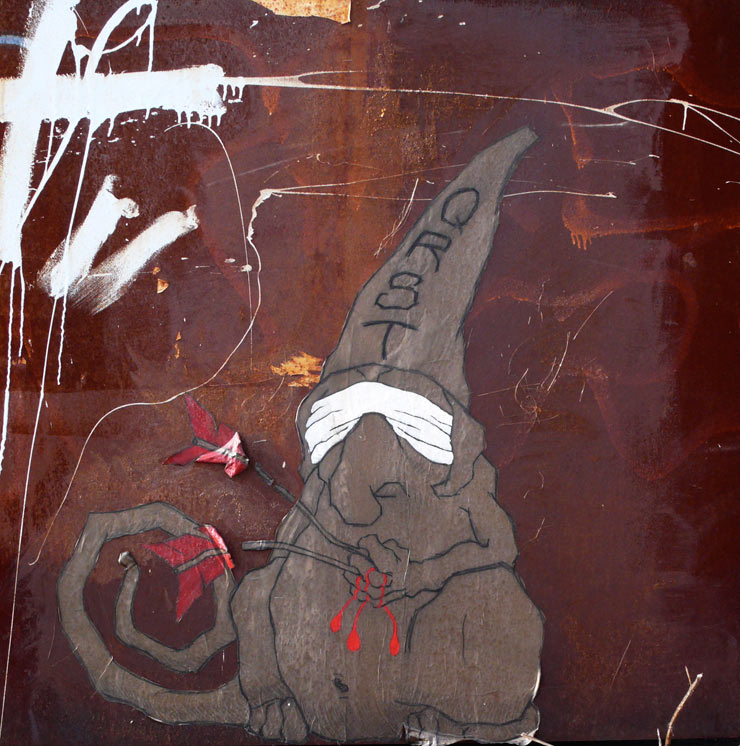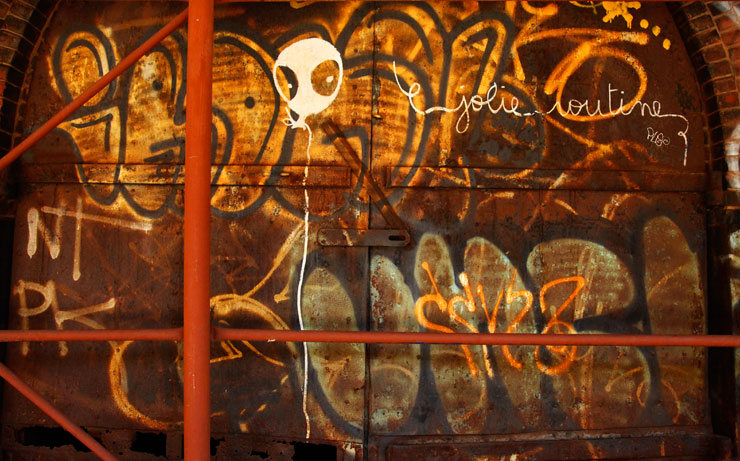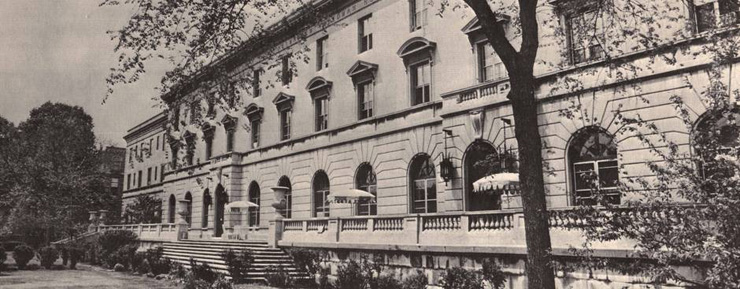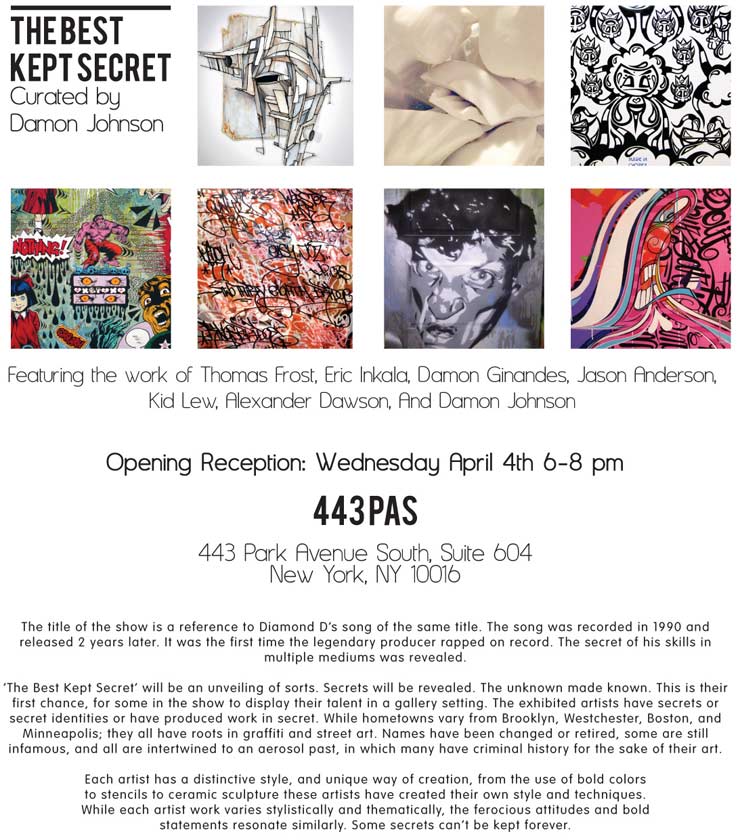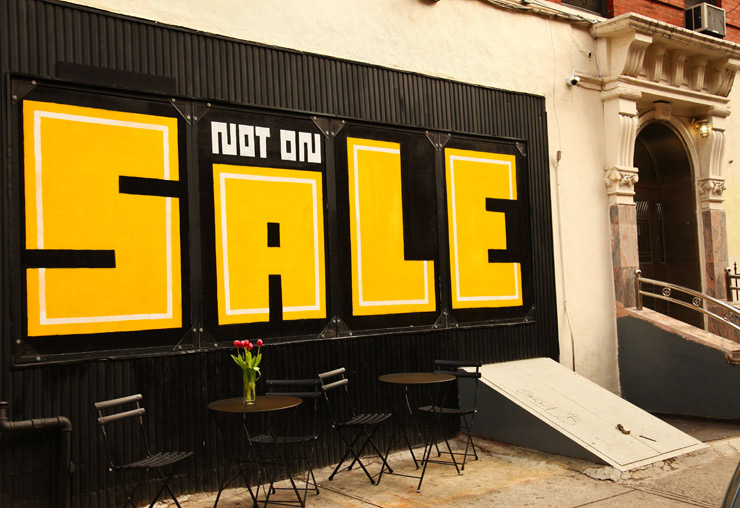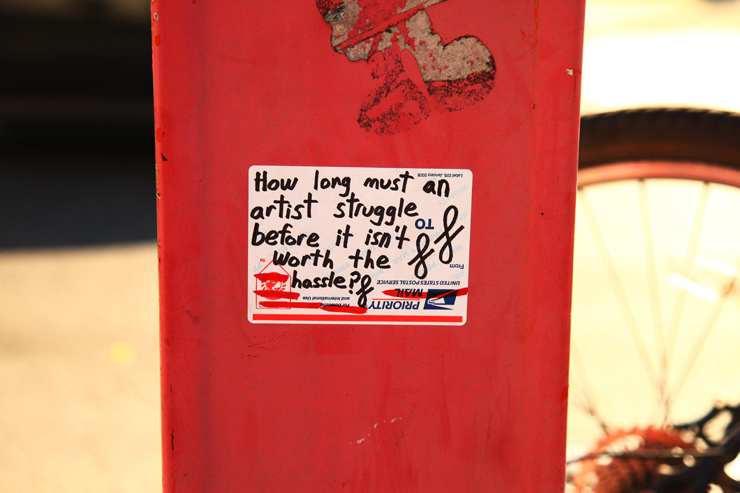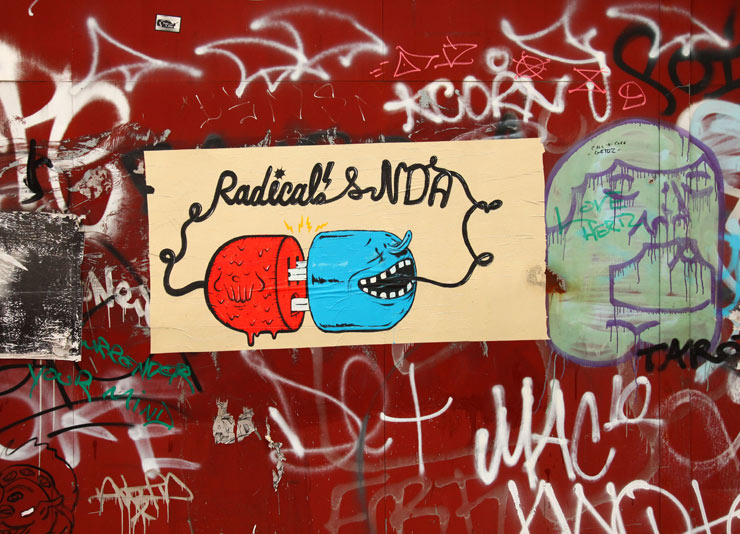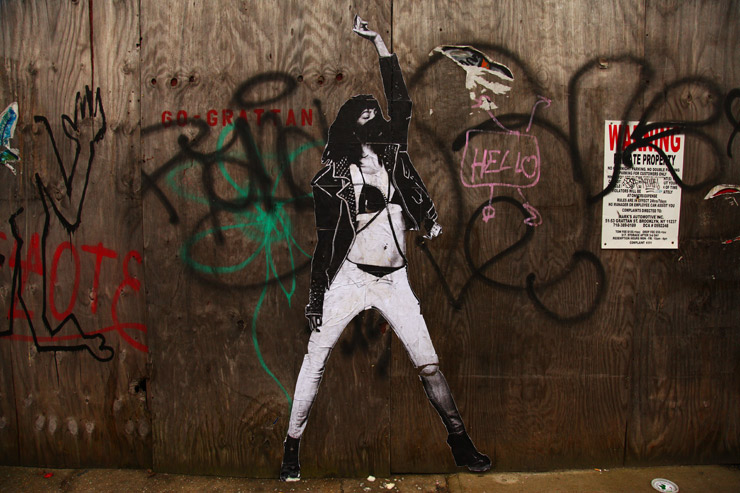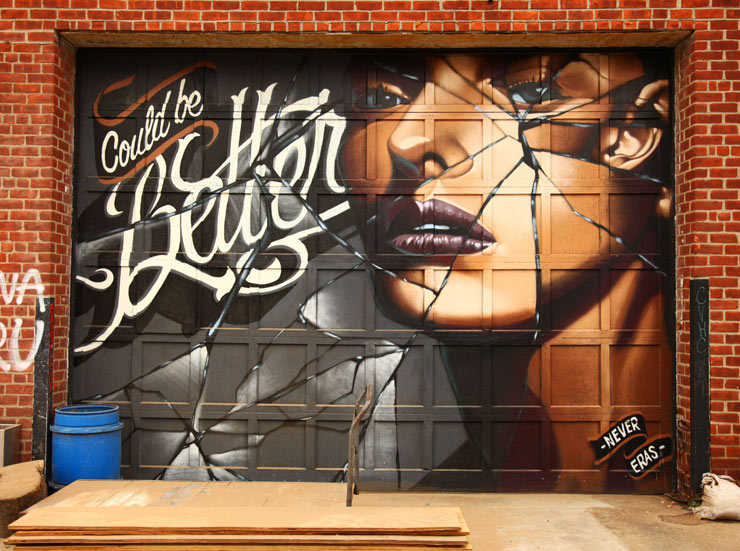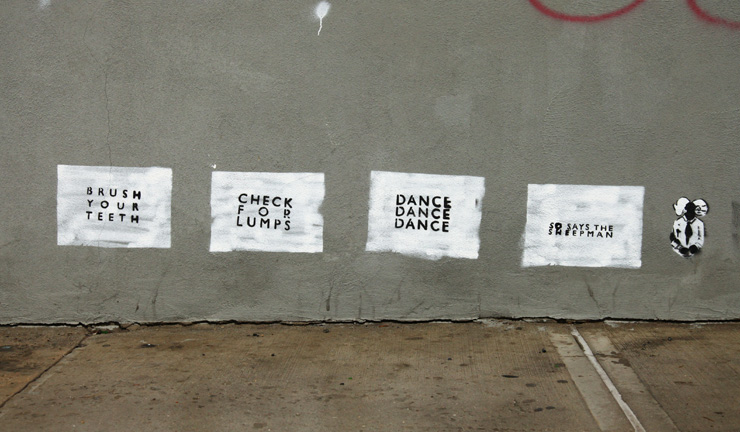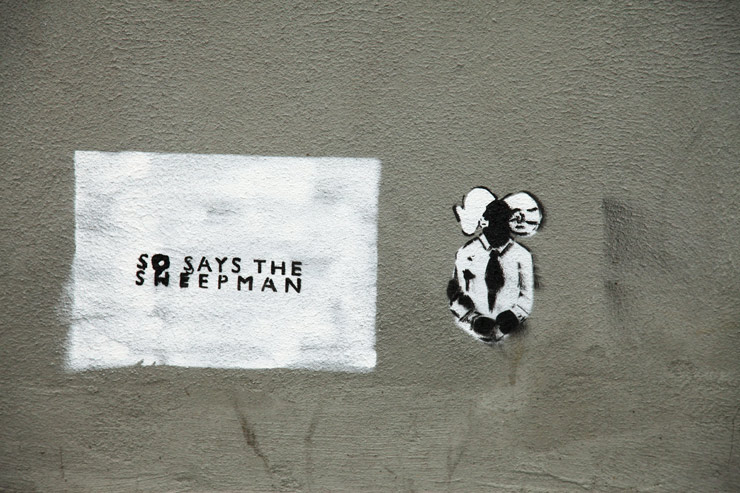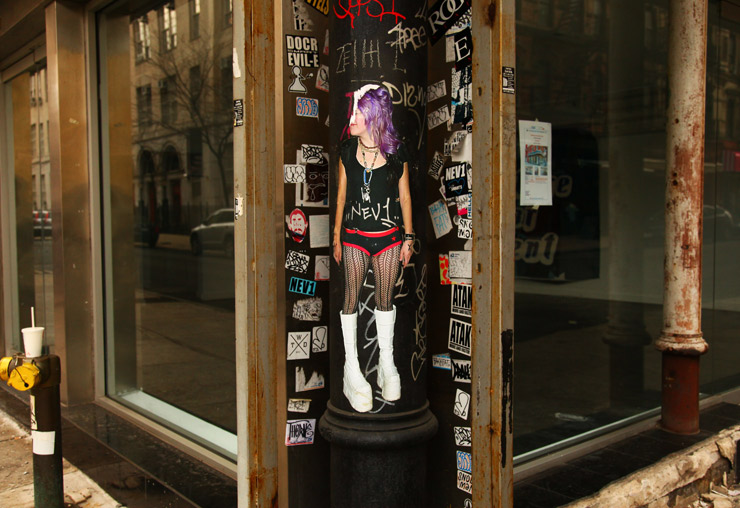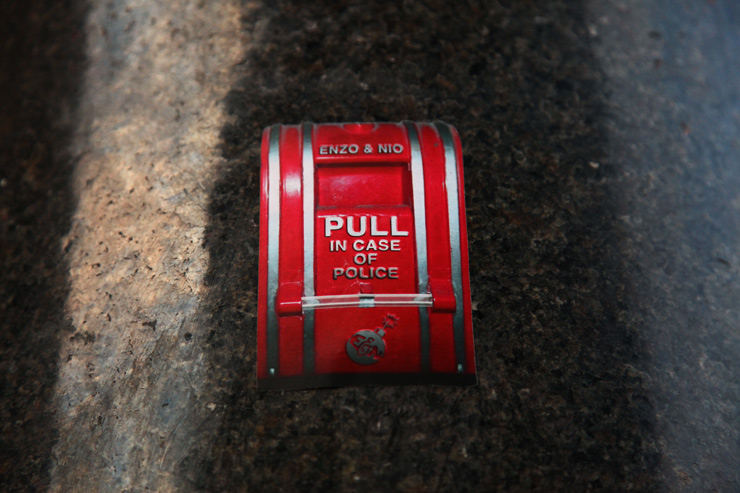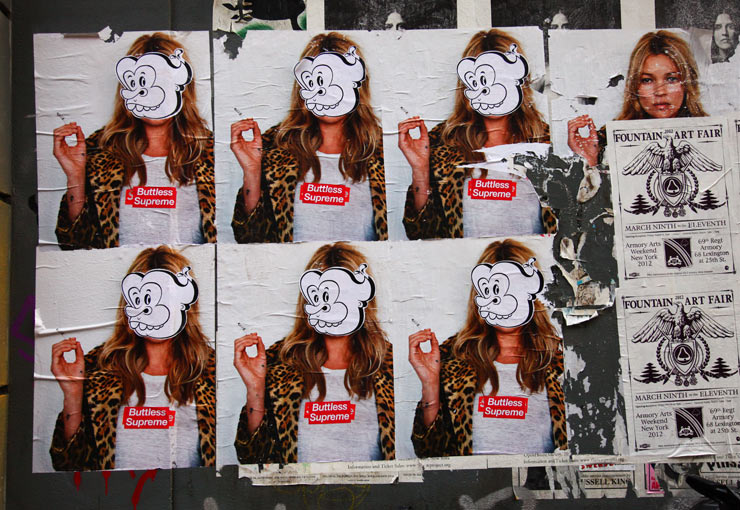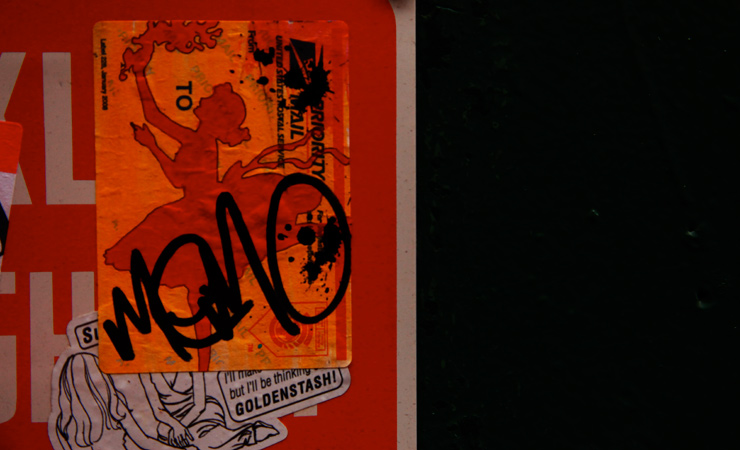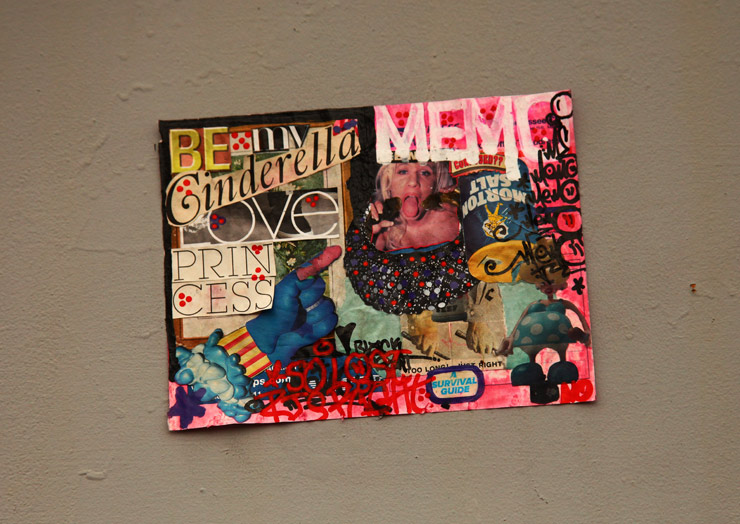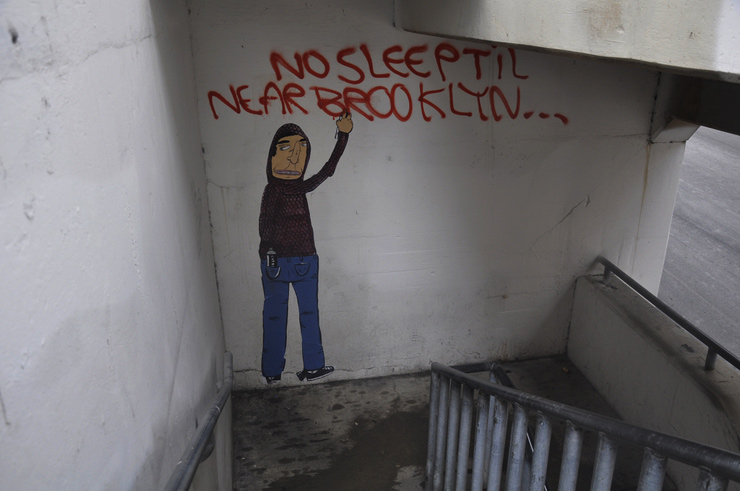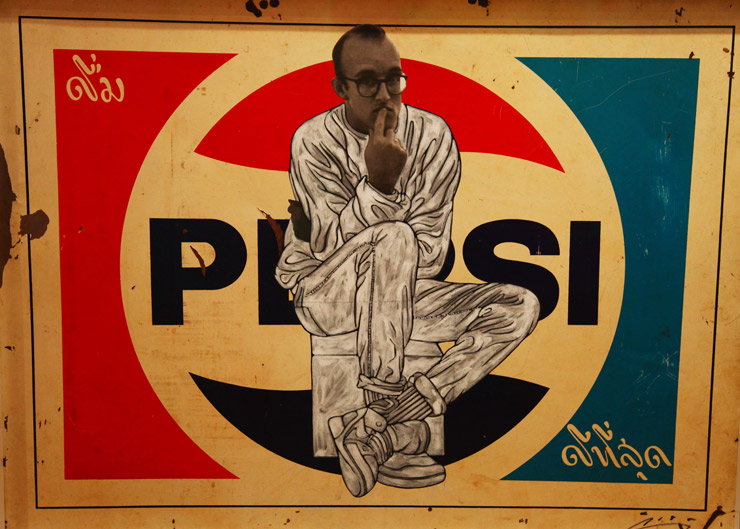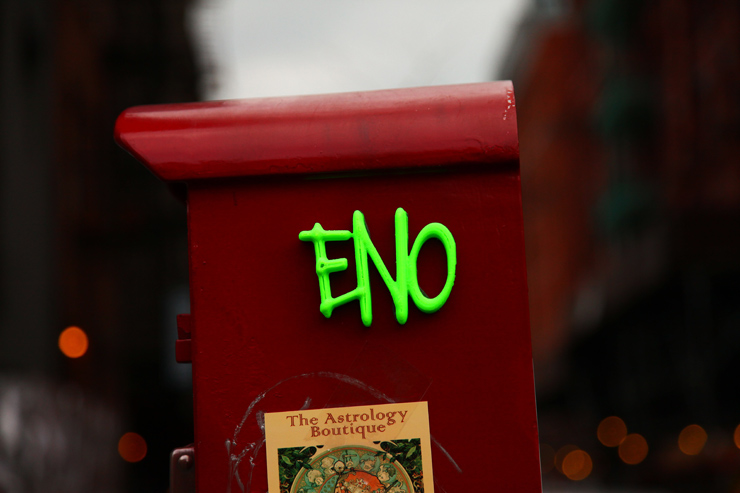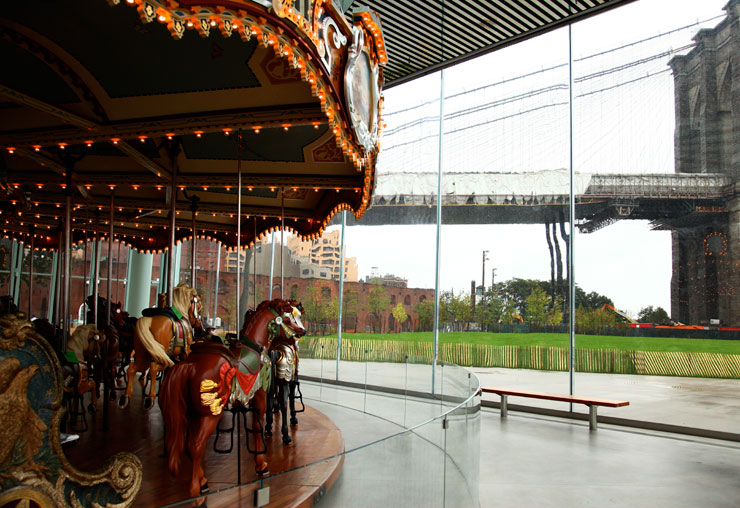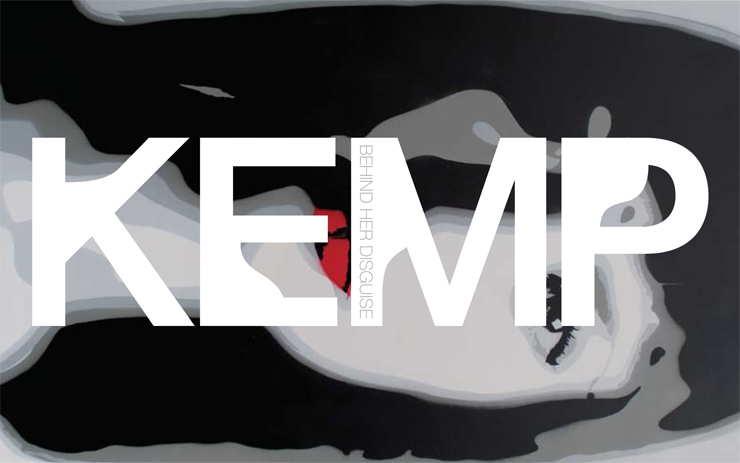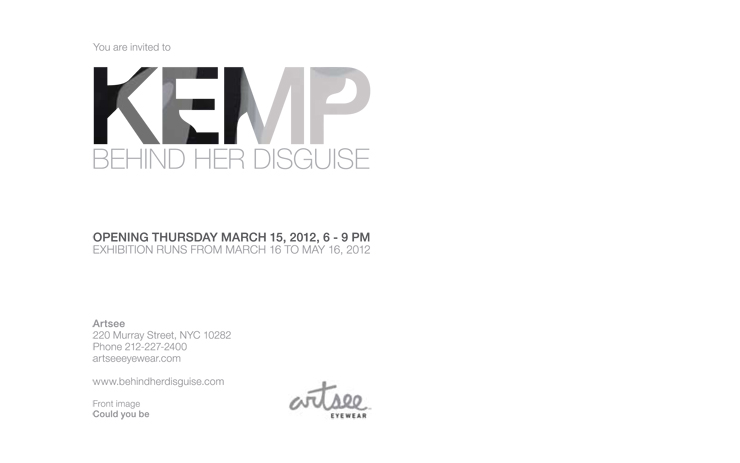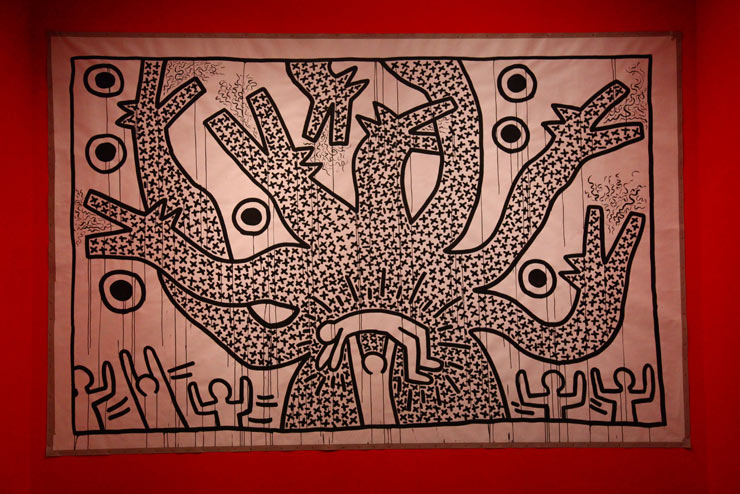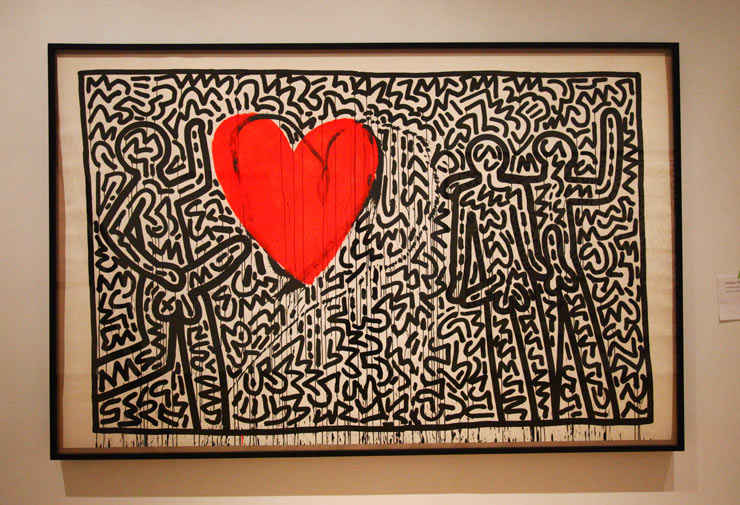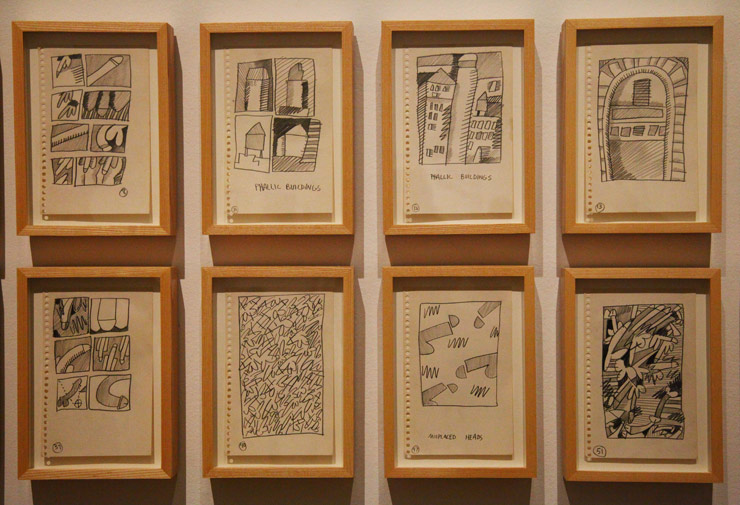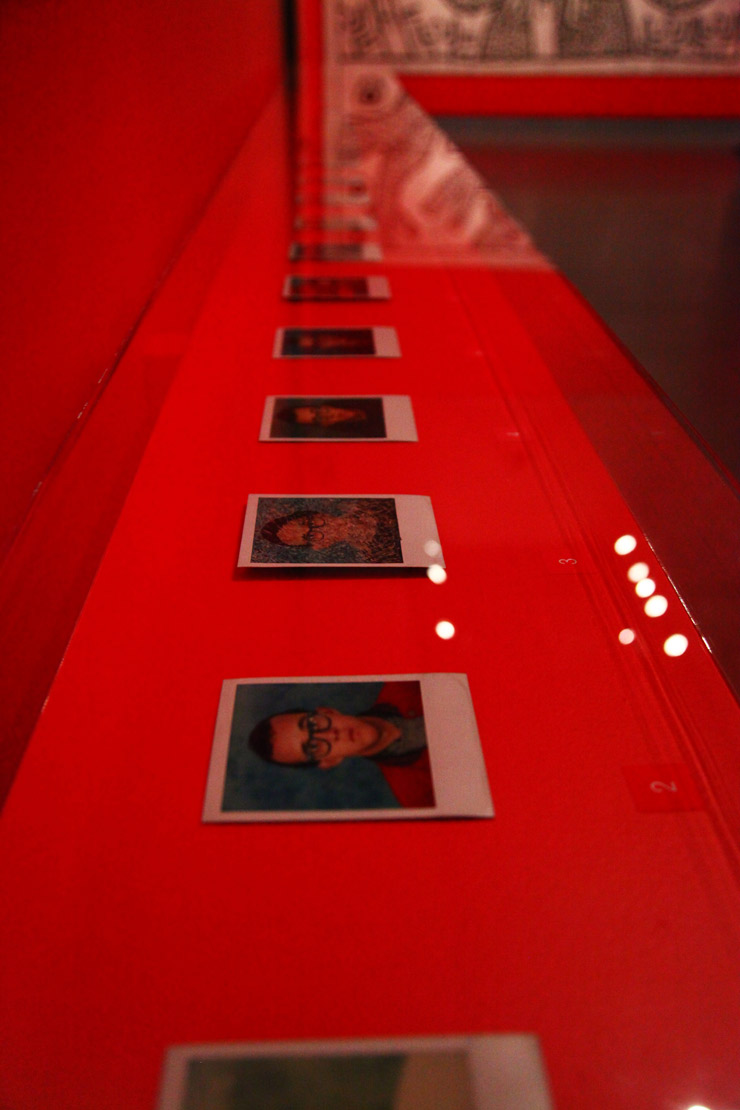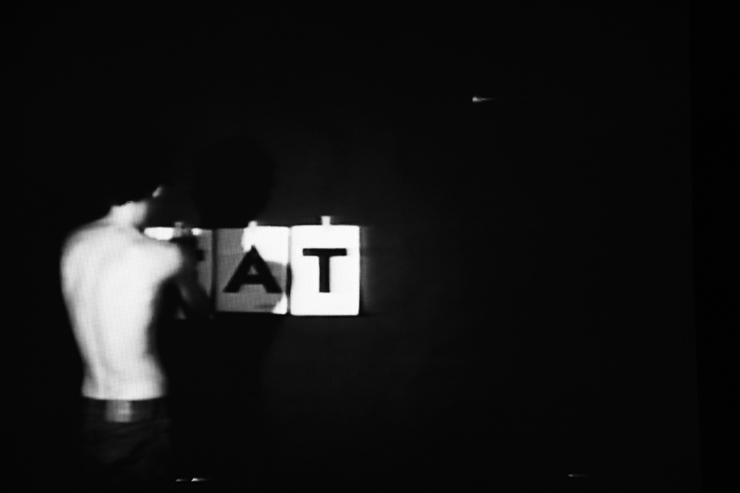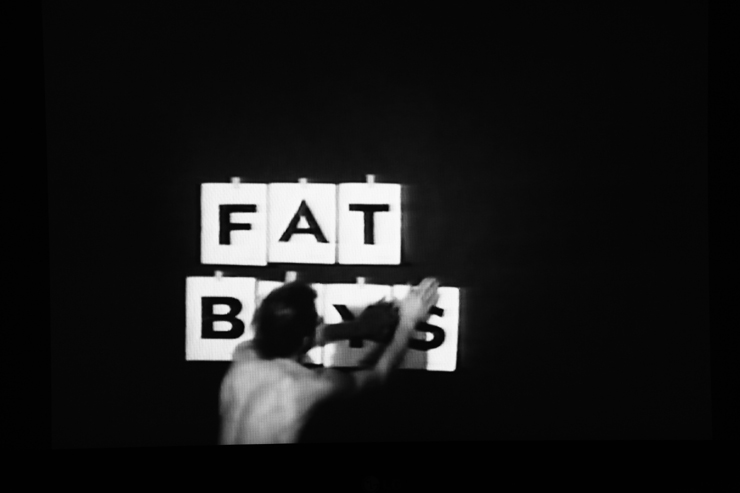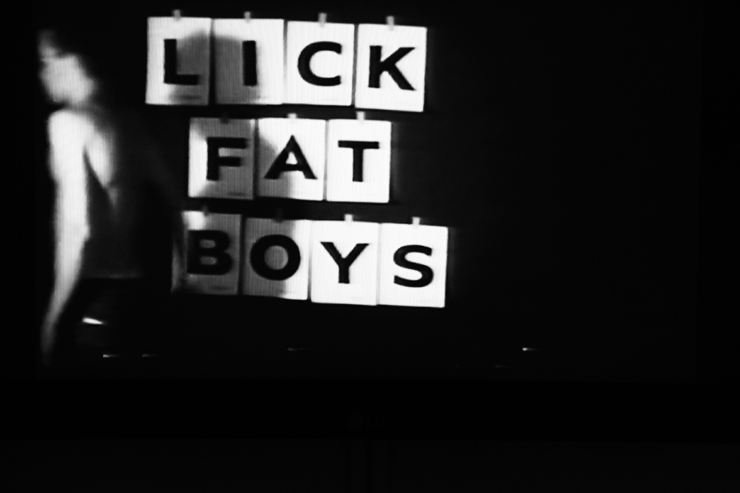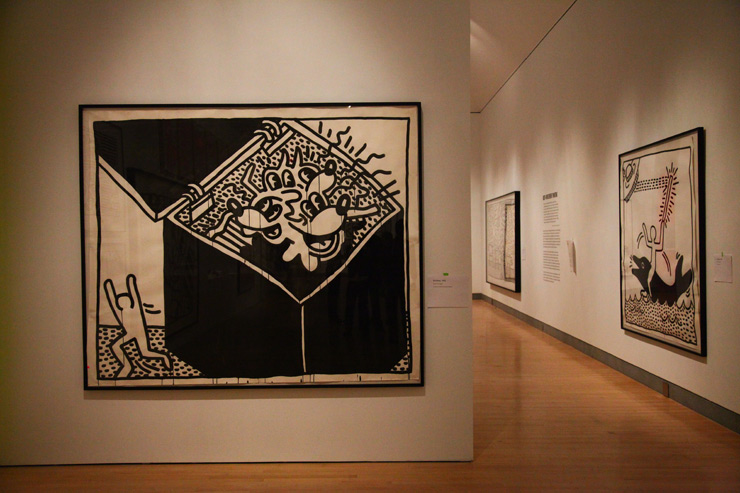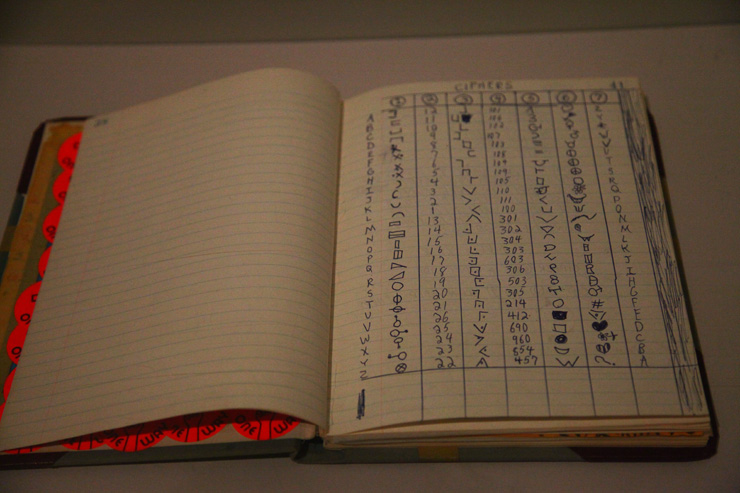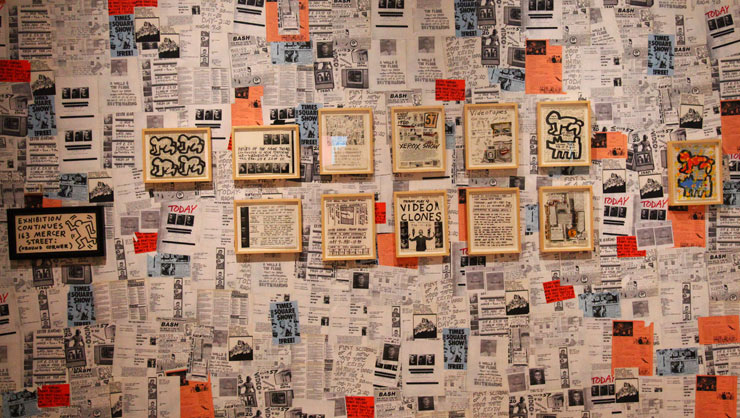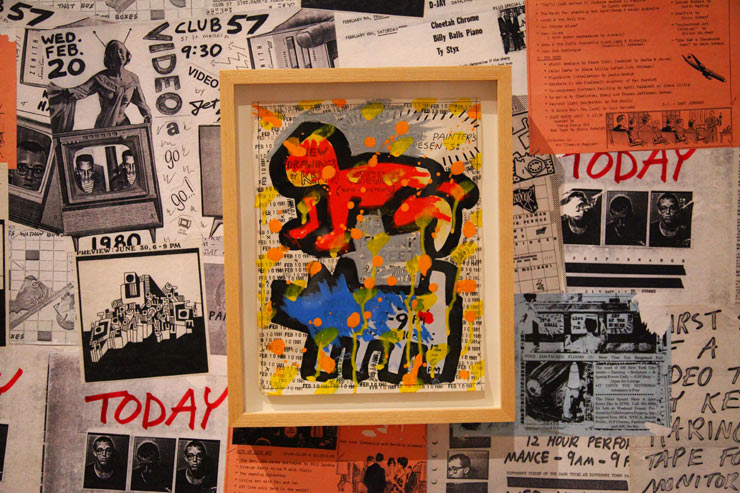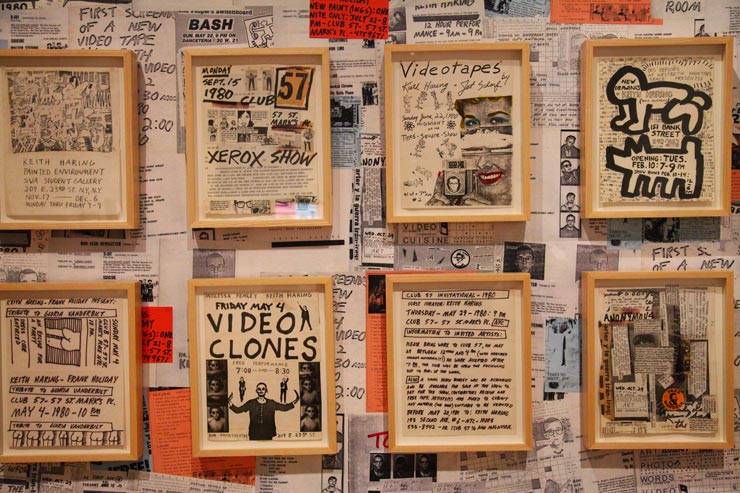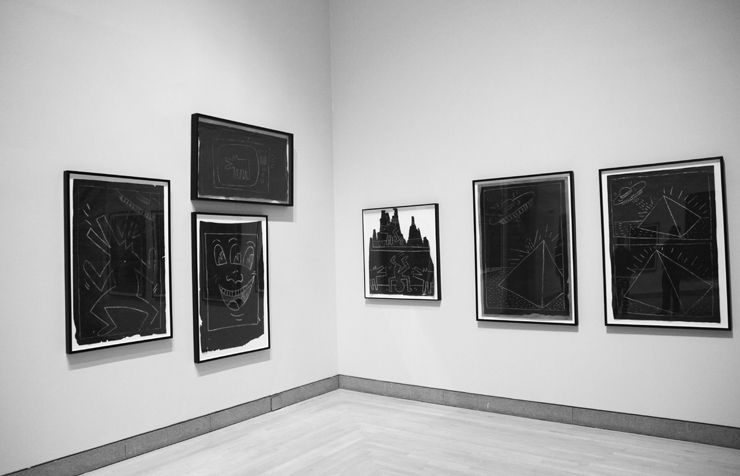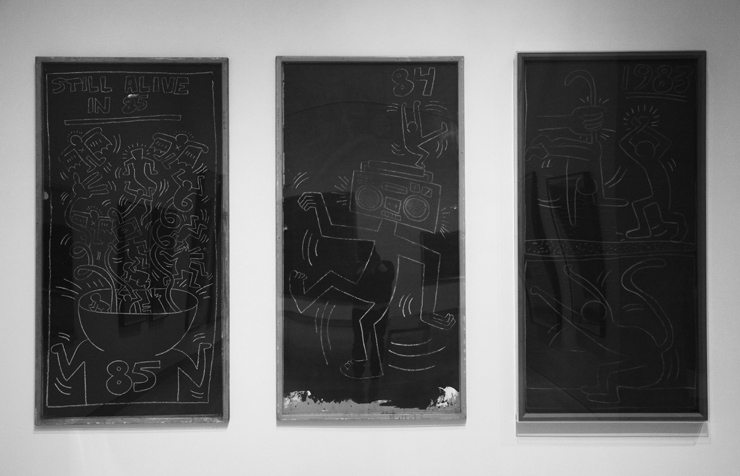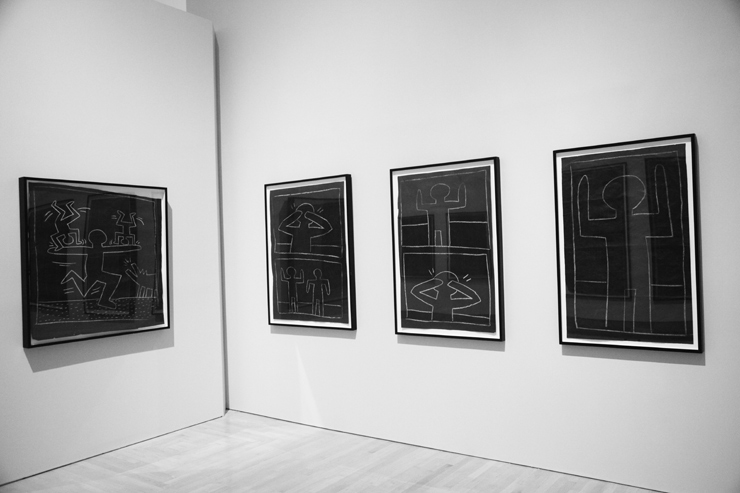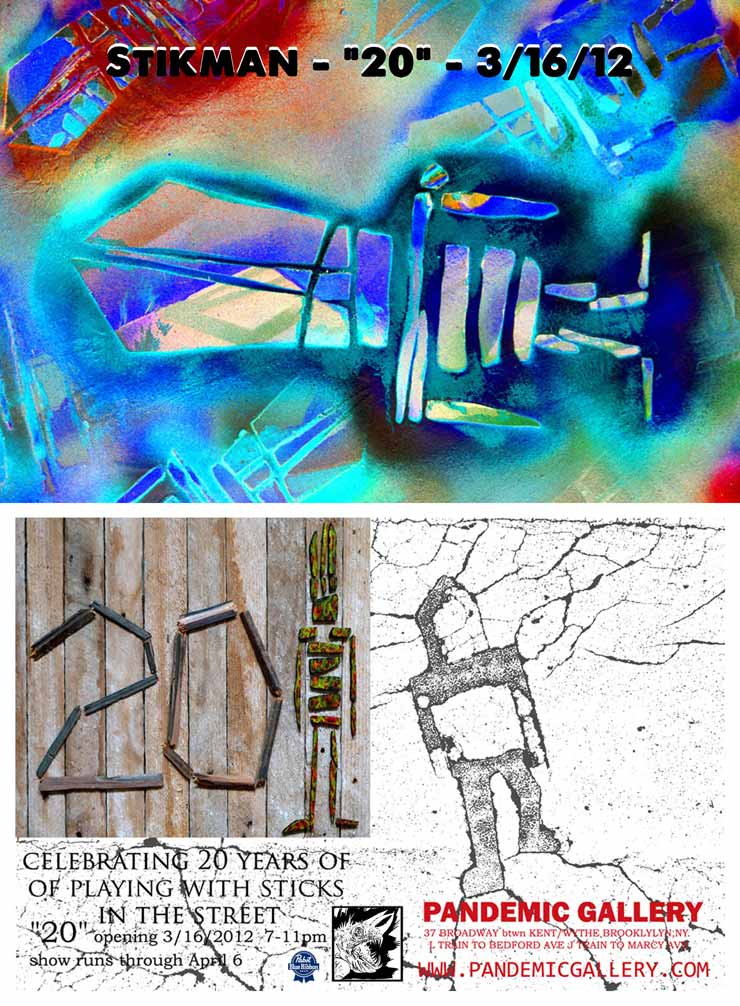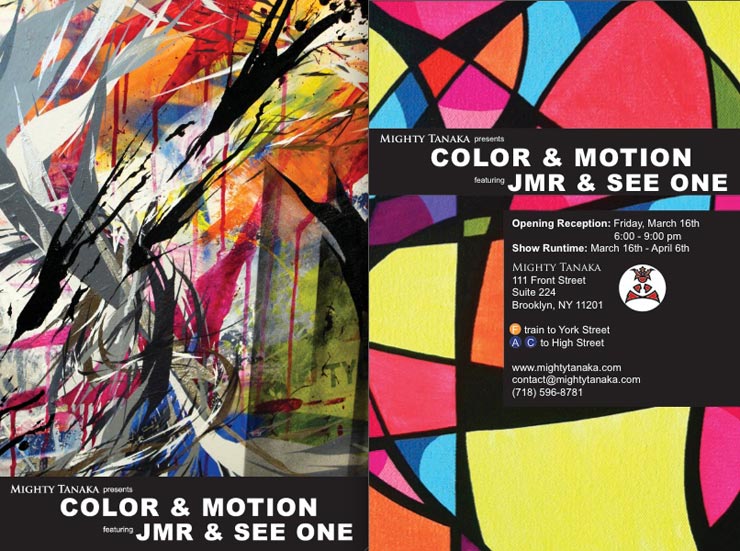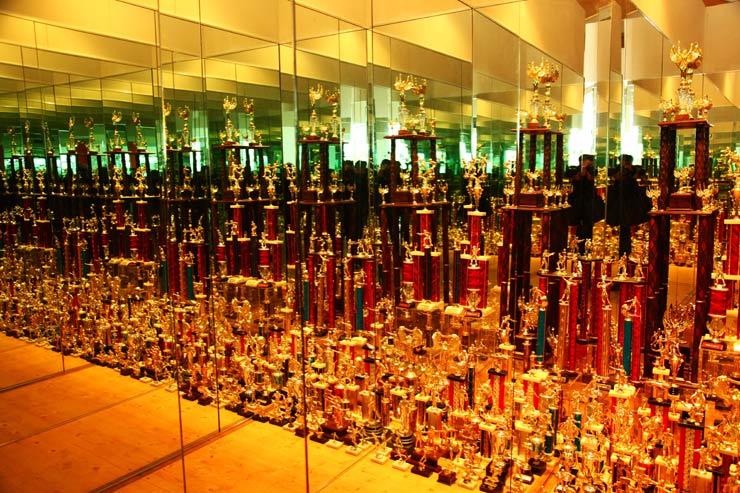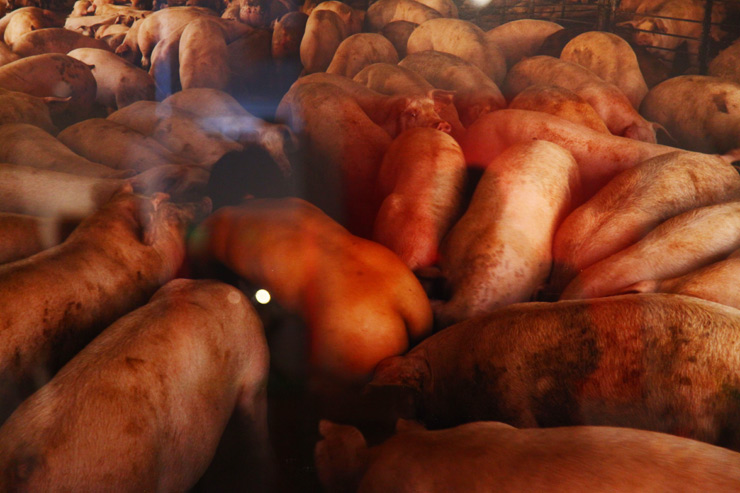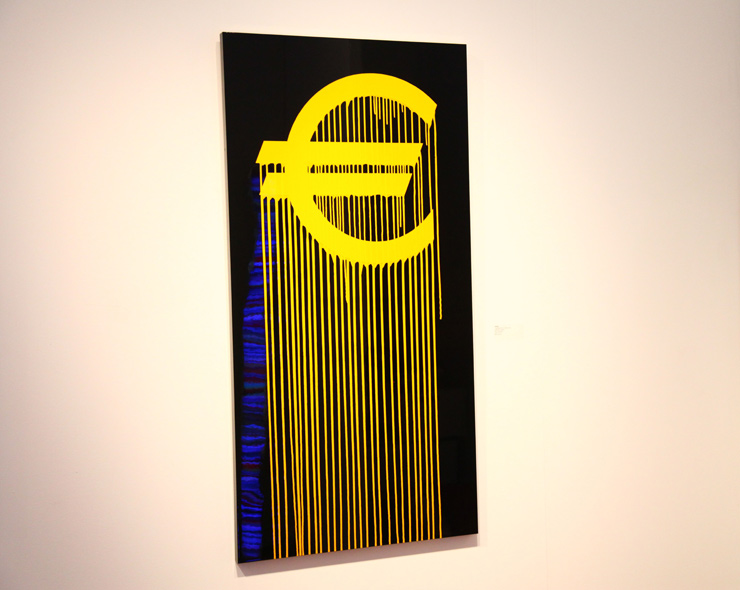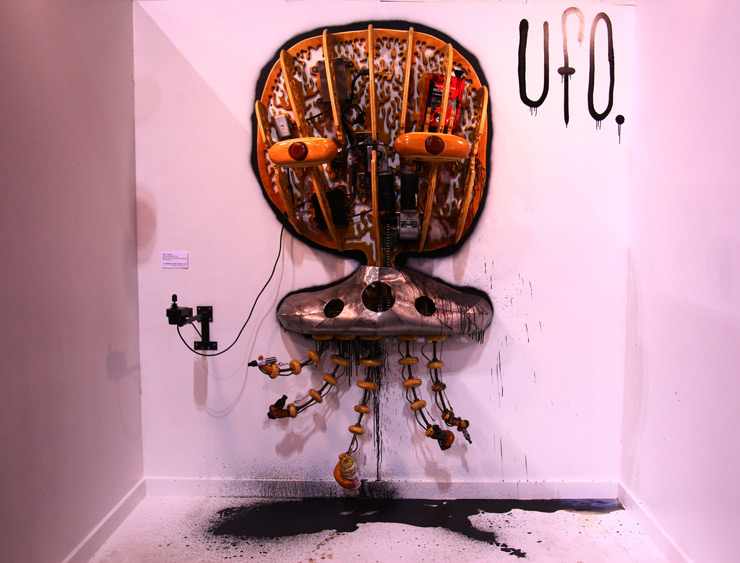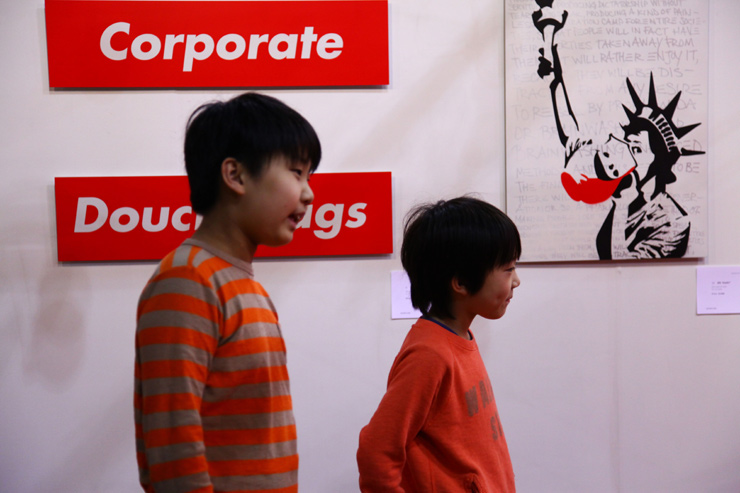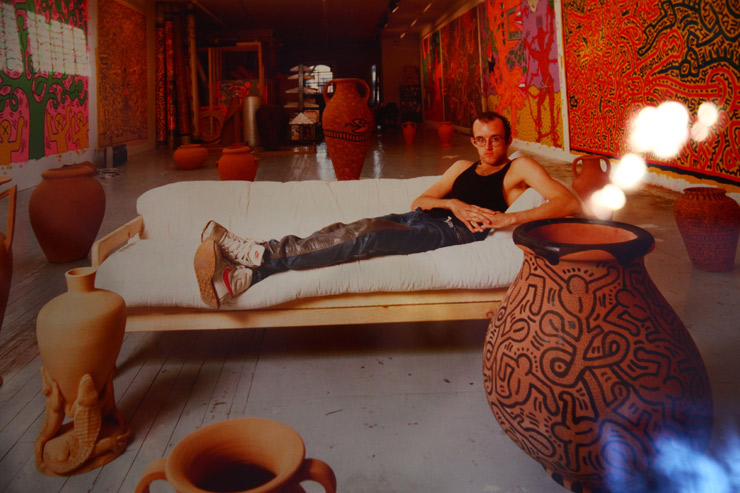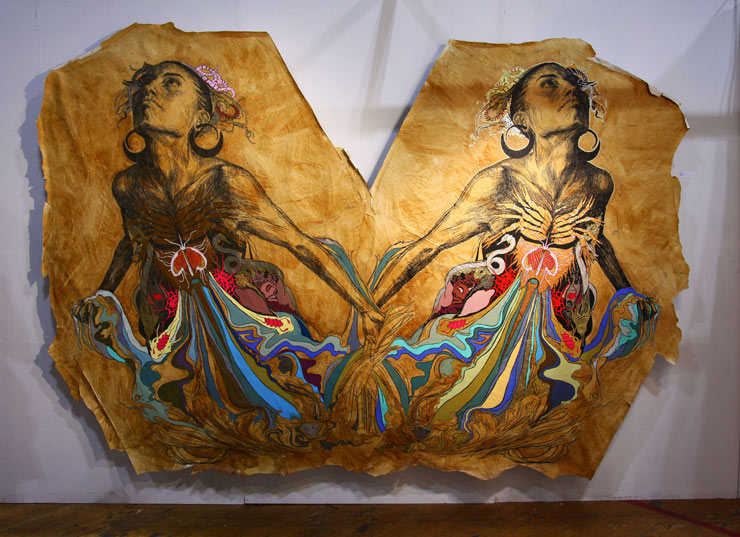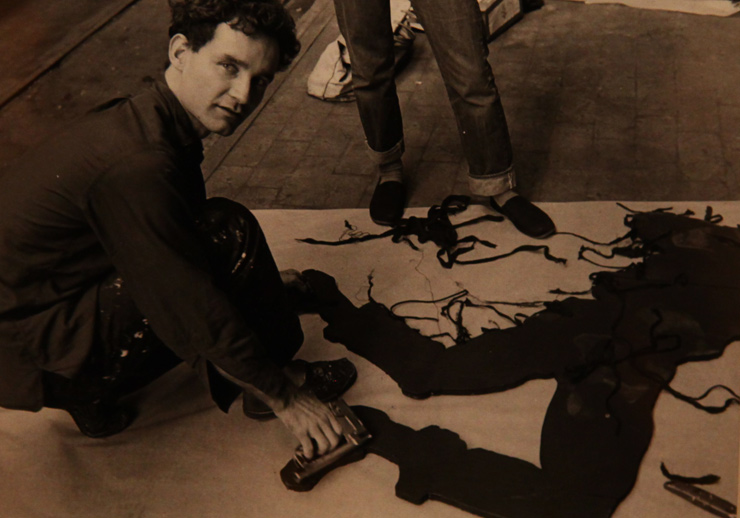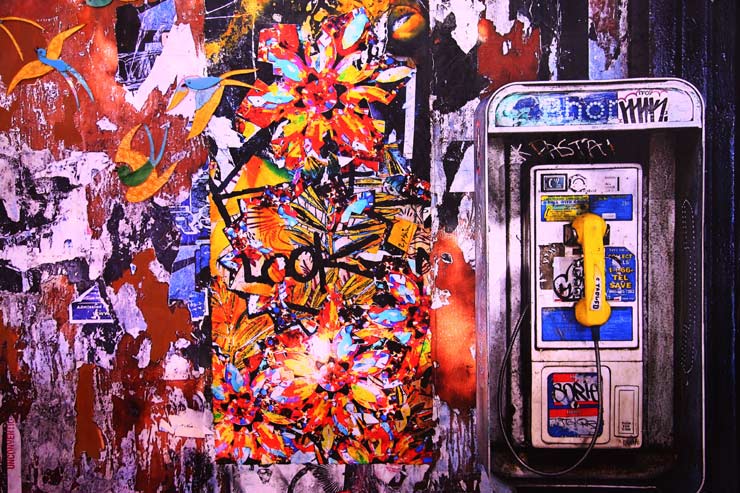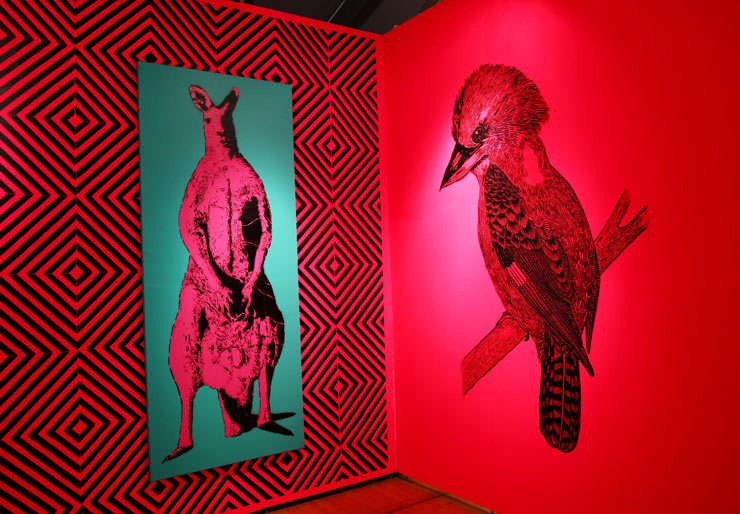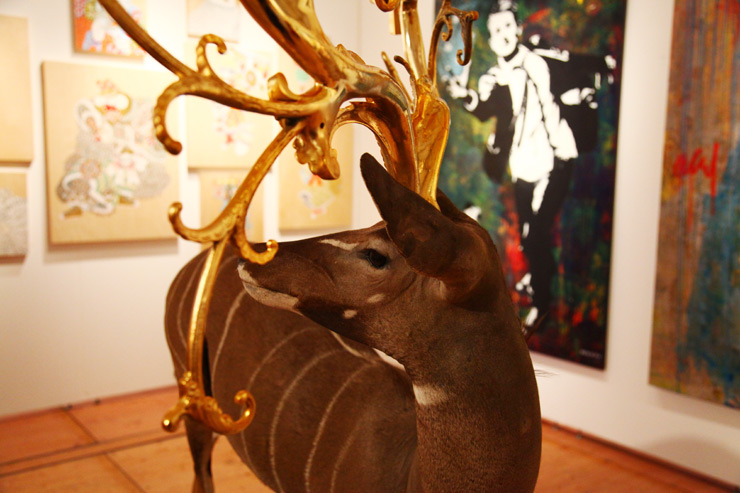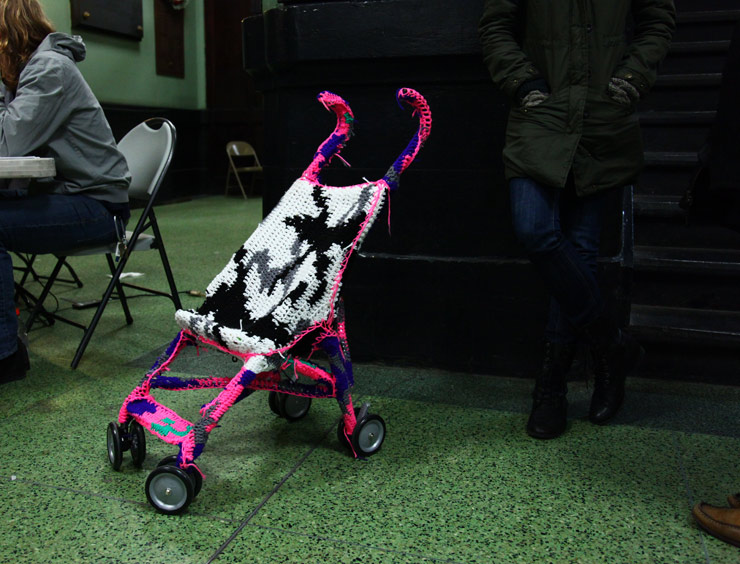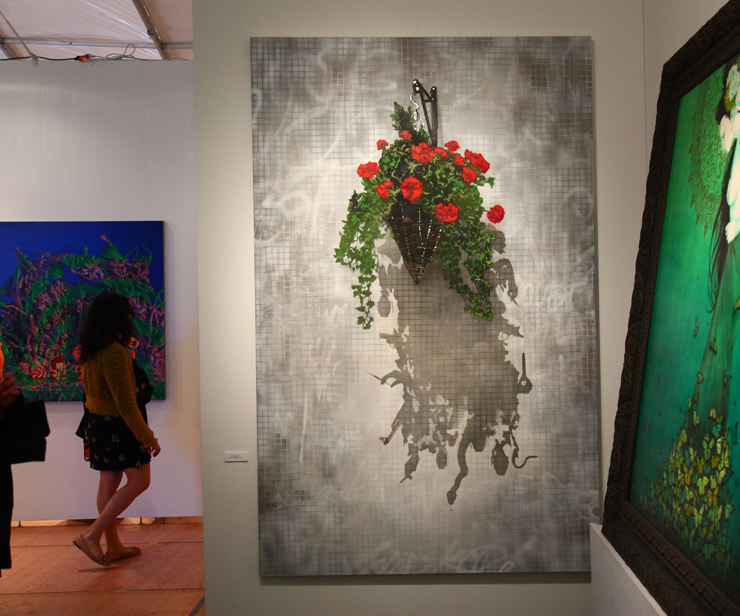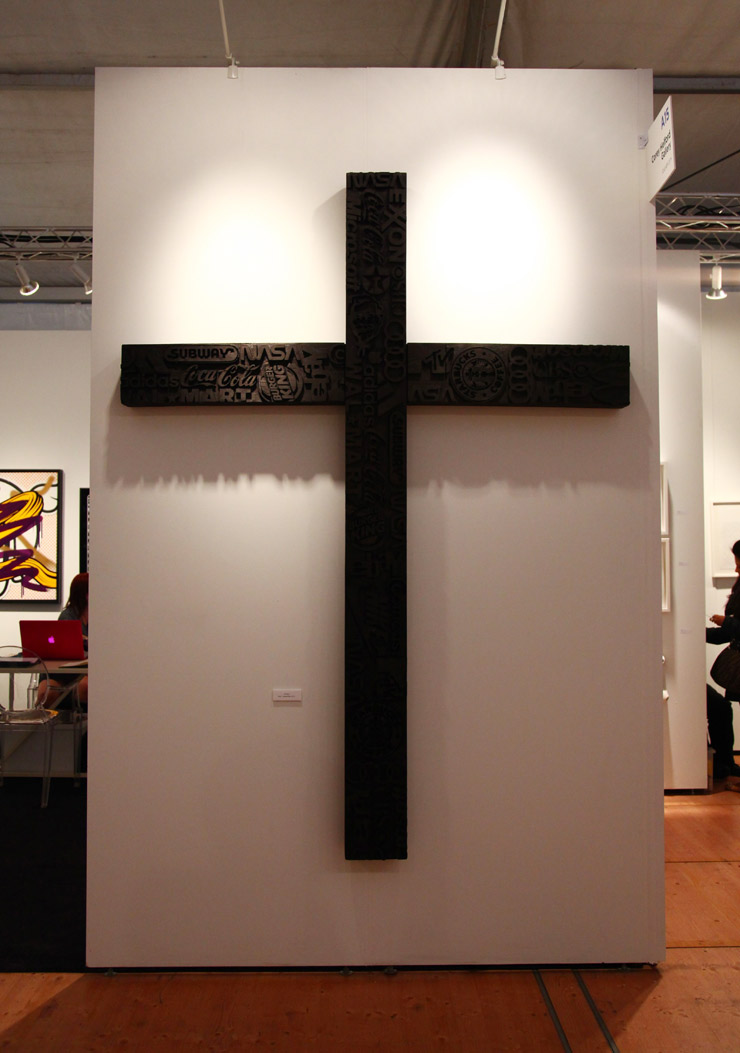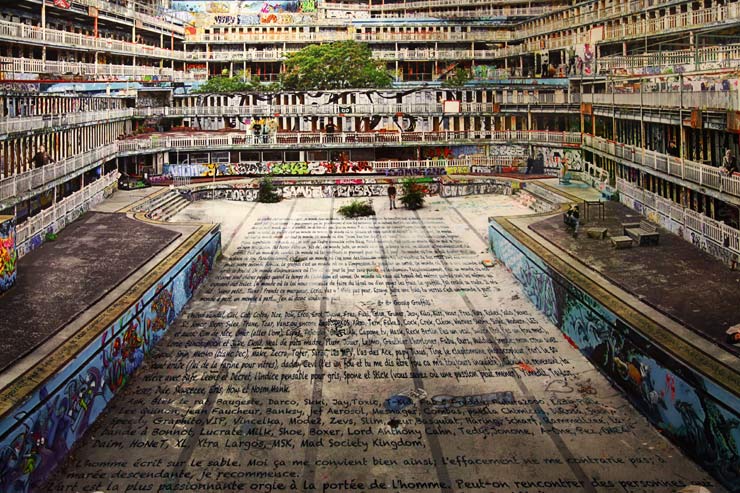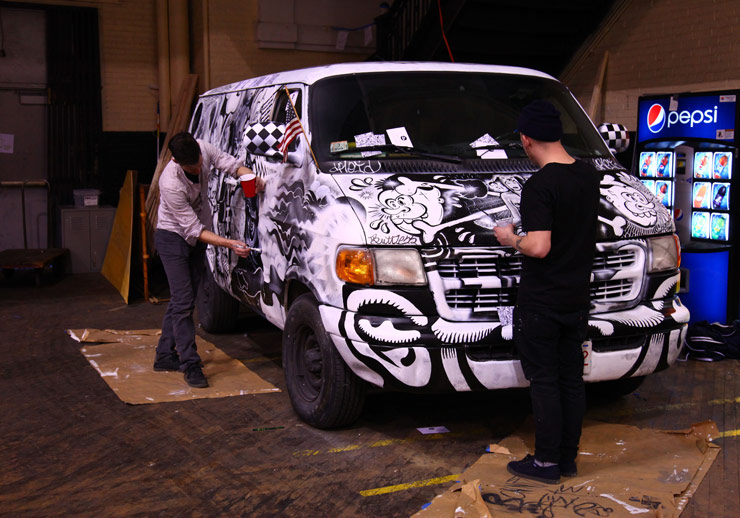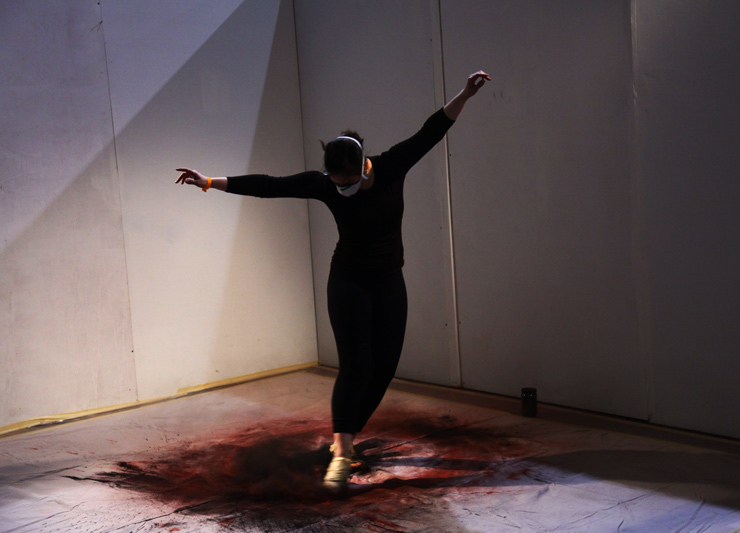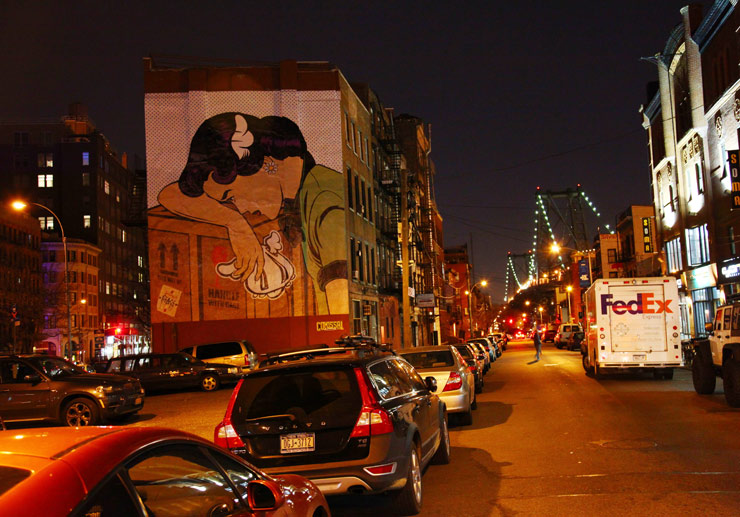
It’s true that the art fairs descended on New York this week. Equally true is that the multiple fairs don’t just bring rivers of collectors and dealers and Looky-Loos, these teeming steaming orgiastic fuster-clucks with names like Poke, Stroke and Fountain also can bring in a wave of the Street Artists! Look at the seven days alone with BSA posts on LA’s Retna, Tel Aviv’s Know Hope and todays’ very special edition King of Images of the Week, D*Face!
D*Face “Love Lost”. The first and largest mural to go up. (photo © Jaime Rojo)
D*Face, one of Street Art’s original British invaders, hit up New York with three new murals this week (two in Williamsburg, one in SOHO) employing sharply graphic pop lines and a humorously tart tongue to create works of high drama. With themes of lust, treachery and broken promises, the D*Face miniseries was streamed live on the street with no cover charge or icy art matron scanning through her iPad list for your name.
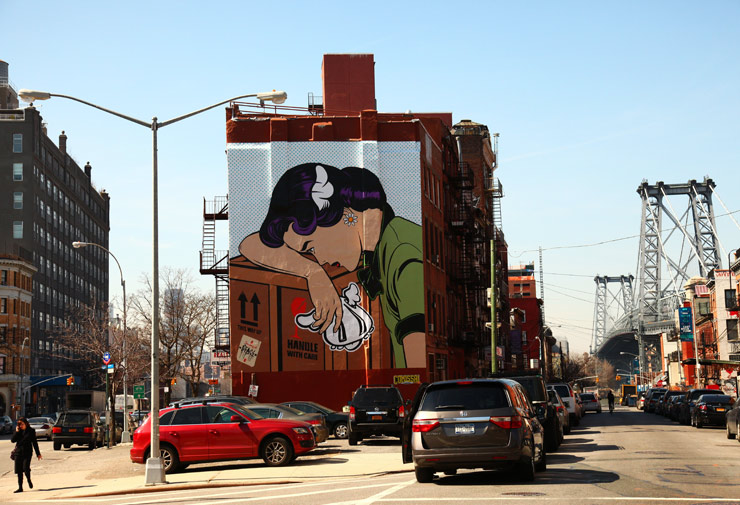
D*Face “Love Lost”. The first and largest mural to go up. (photo © Jaime Rojo)
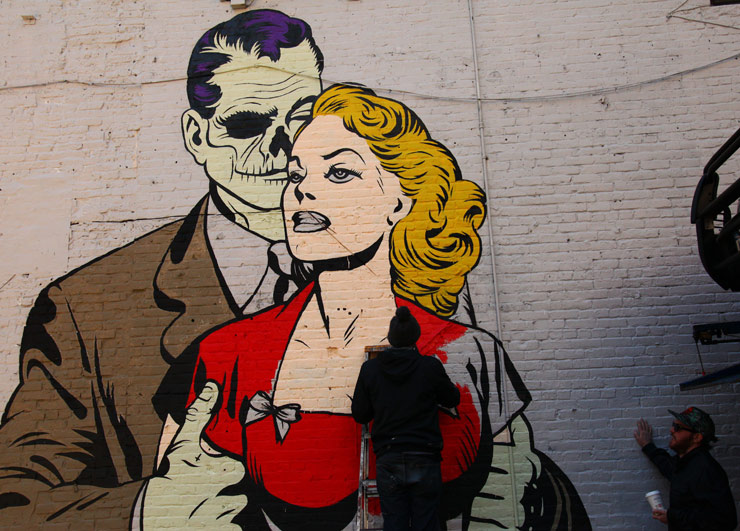
D*Face “Love Her, Hate Him”. The second mural in SOHO. (photo © Jaime Rojo)

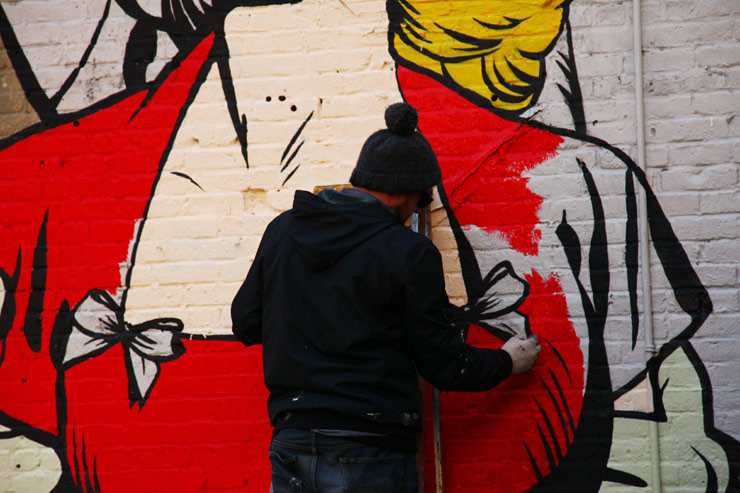
D*Face “Love Her, Hate Him”. The second mural in SOHO. (photo © Jaime Rojo)
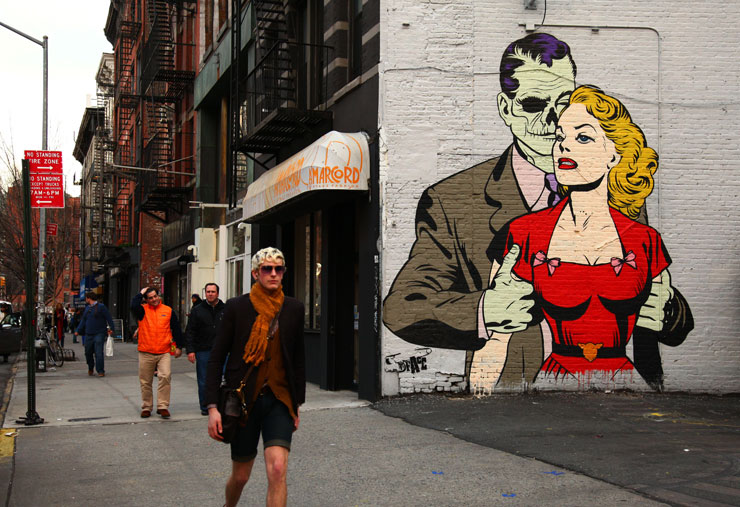
D*Face “Love Her, Hate Him”. The second mural in SOHO. (photo © Jaime Rojo)
The final mural D*Face did was on Friday in Williamsburg, Brooklyn. While nicely sunny, the wind whipped through often enough to keep his fingers cold and his collar up. But on days like this New York can feel like a small town and the icy weather didn’t prevent a small group from hanging out, helping the artist and entertaining one another. Producer Stephen Thompson, photographer Jason Lewis and videographer Cliff Cristofarah took turns making observations, cracking jokes, fiddling with the music, and checking out the local parade as it scurried by.
For an additional feeling of street art community, Futura sauntered by to say hello and to offer entertaining stories and even go on a run for refreshments; water, coffees, and Mexican Coca Cola (with real sugar!). With Rob and Cliff taking turns at their MP3 players and the speakers blasting a bit of a 70s arena rock tribute (The Who, Led Zepplin, Black Sabbath), a couple of bike dudes came by to practice their tricks with a dog in the backpack.
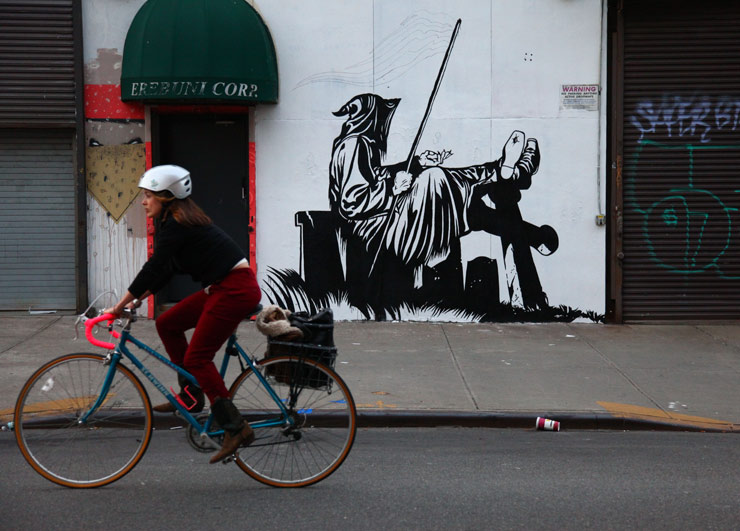
D*Face. Third mural in Williamsburg. (photo © Jaime Rojo)
Brooklyn Street Art: How would you describe these new pieces in New York?
D*Face: All the pieces surround the notion of ‘Love’, ‘Loss’ and ‘Longing’, all drawn from recent personal experiences, everything I create is pulled from experience personal to me, hopefully people will also connect to them too. I have three new pieces so I wanted to get three good spots with as much visibility as possible, the larger the better.
Brooklyn Street Art: Will you get a chance to skateboard while you’re here?
D*Face: Unfortunately not. I love this city for skateboarding, but I wont get to do much other than paint walls and hopefully cut loose and party a bit.
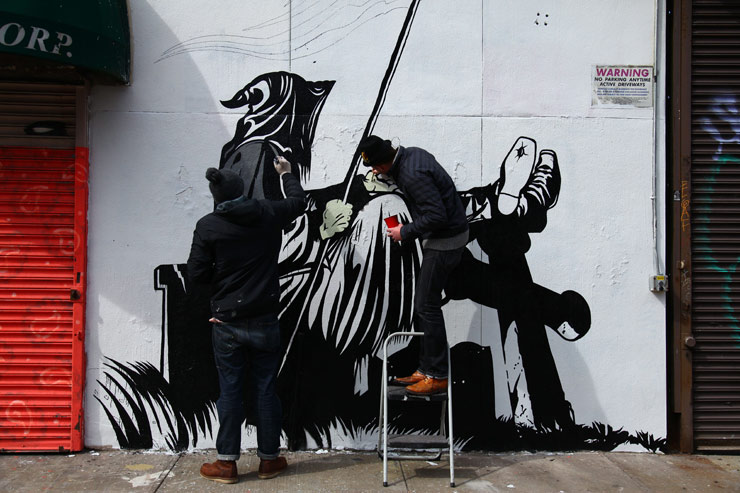
D*Face. Third mural in Williamsburg. (photo © Jaime Rojo)
Brooklyn Street Art: Can you talk about where your work is going thematically now?
D*Face: Thematically my work always draws upon personal experiences, whether thats the saturation of media in our lives, our fascination with celebrity and stardom or more singular experiences such as the loss of loved ones, searching your heart for love or holding people close when you should be letting them go.
I mostly rework old imagery that I’ve discovered, chopping bits of one or several images with another to create a new image that I feel is more relevant to today’s society and certainly the message I want to get across. So thematically its a continuation, it just has several veins that it runs off into.
Brooklyn Street Art: It feels like the Occupy Wall Street movement may have taken up some of the same punk aesthetics and energy that you were first drawn to. Is your work changed or affected at all by OWS?
D*Face: Haha! No not at all, but there’s always someone more punk than you, punk!
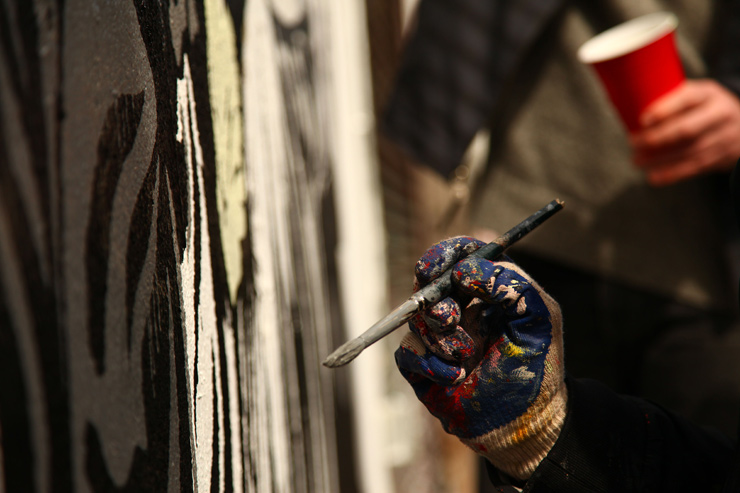
D*Face. Third mural in Williamsburg. (photo © Jaime Rojo)
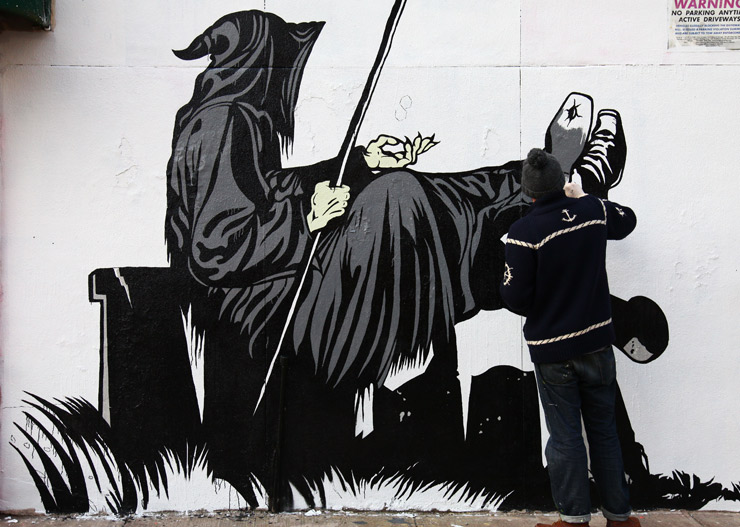
D*Face. Third mural in Williamsburg. (photo © Jaime Rojo)
Brooklyn Street Art: Reworking the vocabulary of advertising and the practice of culture jamming can be very effective as education. Do you think of your work as message-driven?
D*Face: Yes, first and foremost my work has to have a concept, an idea, a message, it’s that which drives my work. Conceptually I’m always trying to push my ideas, push myself, keep myself excited and interested. I don’t want to stand still and see the growth of my work as a flik book, by that I mean small evolutions over time, what I want are solid chapters, which carry a thread of thought linking them all together.
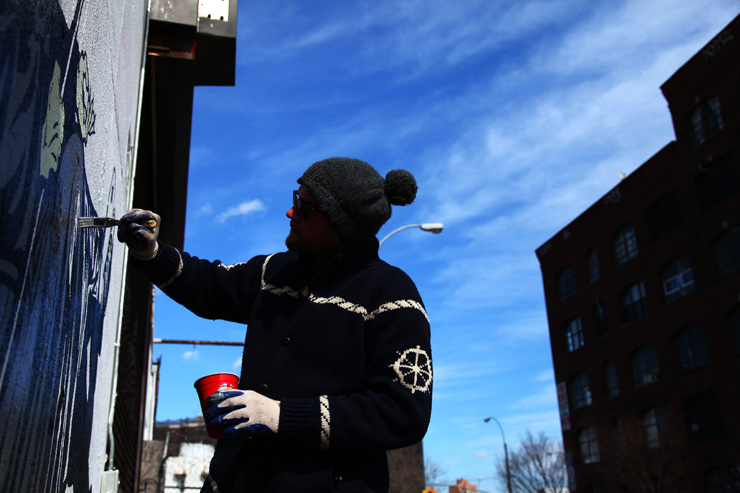
D*Face. Third mural in Williamsburg. (photo © Jaime Rojo)
Brooklyn Street Art: What role does humor play in your stuff?
D*Face: Oh its massively important, life is pretty heavy at the best of times, so even serious messages or thoughts don’t have to be heavy in execution, even the dark thoughts or concepts in my work I hope are executed in a poppy way, I want to draw people in first, get them to appreciate the aesthetic, then hopefully they start to question the image, its content, its meaning. If they don’t and appreciate it only on its surface value then thats fine. I don’t want to ram messages, political, religious, consumerist or otherwise down peoples throats in a way that burdens life’s load.
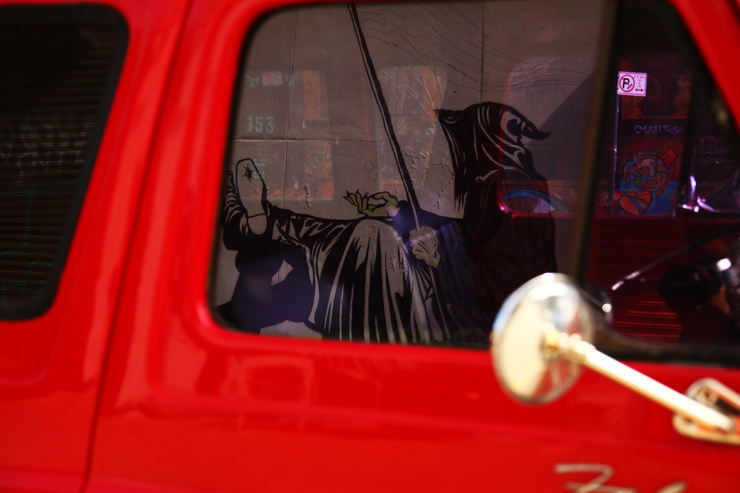
D*Face. Third mural in Williamsburg reflected on the side window of a vintage Ford Falcon. (photo © Jaime Rojo)
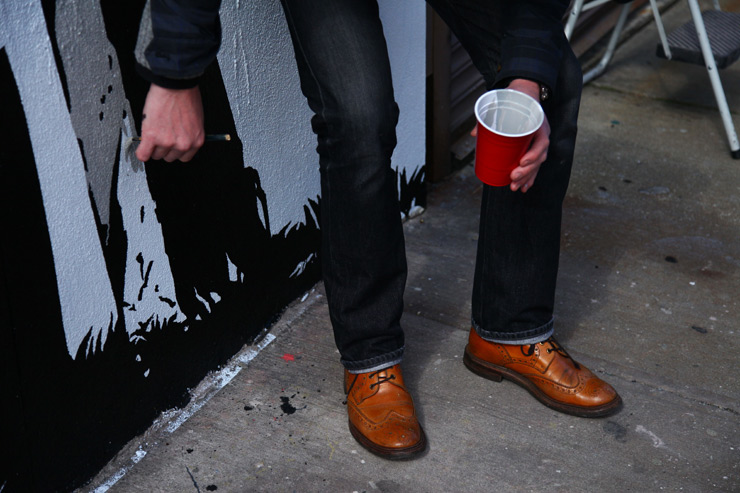
D*Face. Third mural in Williamsburg. Stephen Thompson his producer and assistant showing some back handed technique and snaazy foot wear. (photo © Jaime Rojo)
Brooklyn Street Art: You’ve had some serious success in galleries. Why is it still important to you to hit the street today?
D*Face: I’m privileged to have the gallery success I do. I thank everyone that has supported me and my work over the years, to live as an artist, support my family, employ artists to help me, is an amazing opportunity and something I wake up thankful of everyday.
Whilst I love gallery shows and the opportunity to work in a gallery, it brings with it the ability to create different works, execute concepts and play with space in a different way, but you have to want to see ‘art’ or know about the artist or the gallery to see that work, galleries can be intimidating places, I don’t want that, I want my work to be inclusive, not exclusive, so putting work in the streets is the most effective way of doing this.
You can’t beat the feeling of painting in the street, interacting with people, hearing their views, thoughts and ideas on what it is your painting… you know you get to bring the unsuspecting public in, people that may have no interest in art, never walked in a gallery, suddenly when faced with a painting in the street have a different take, a different perspective… it’s really, really interesting, that interaction, even if they don’t like it, you’ve still changed their day, opened their eyes, hopefully you might get them to LOOK at their surroundings and not just see.

D*Face. Doing a bit of mixiology. (photo © Jaime Rojo)
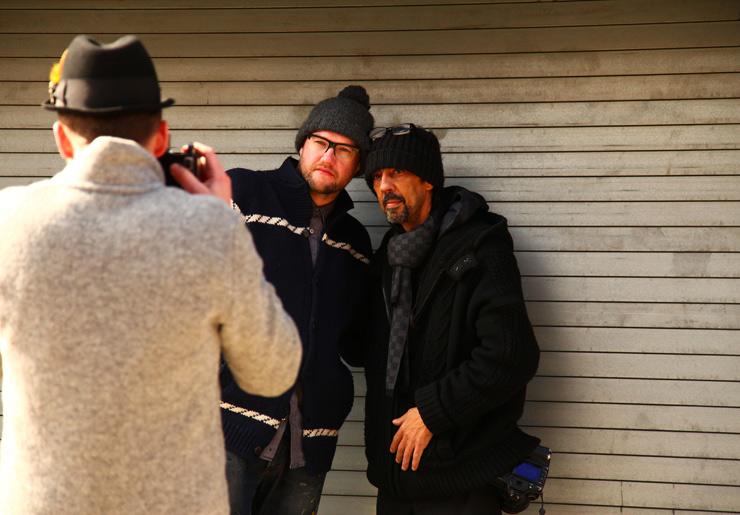
D*Face. Stephen takes D*Face and Futura’s portrait. (photo © Jaime Rojo)
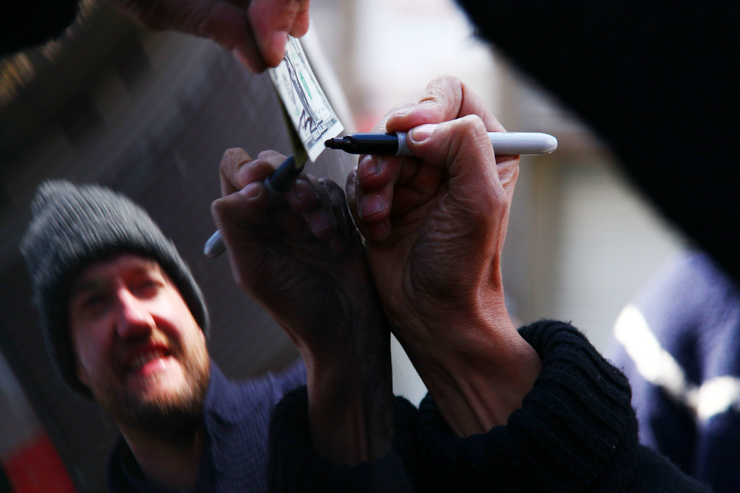
Futura tagging a dollar bill for D*Face. (He did one for Word To Mother as well). (photo © Jaime Rojo)
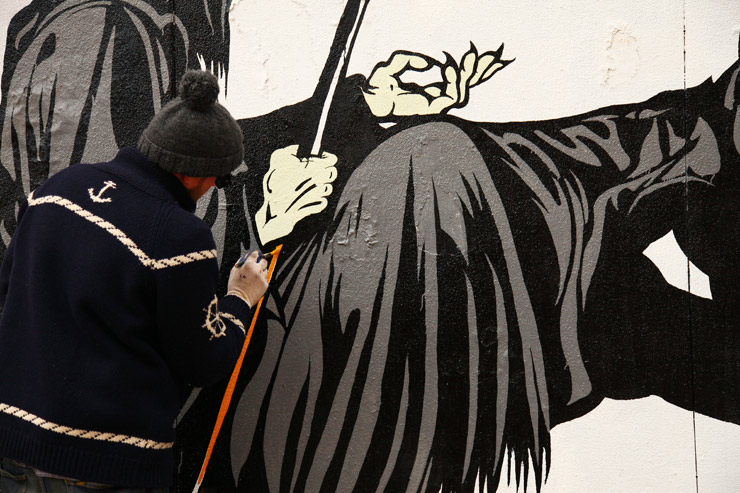
D*Face. Third mural in Williamsburg. (photo © Jaime Rojo)
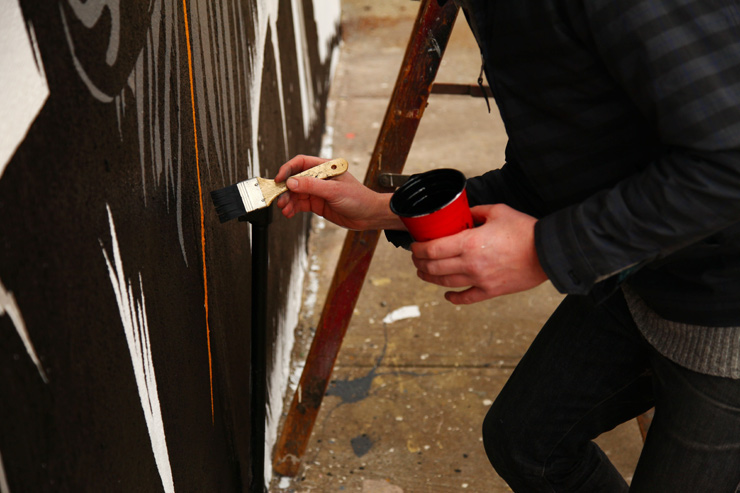
D*Face. Third mural in Williamsburg. (photo © Jaime Rojo)
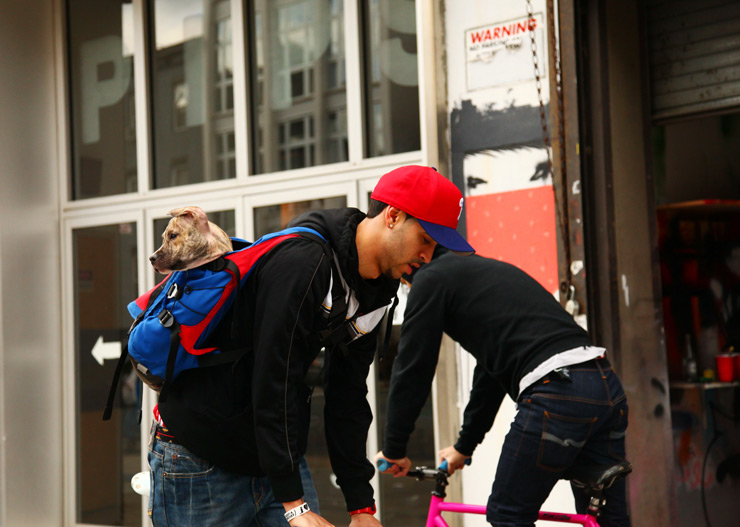
Two local kids and a puppy. (photo © Jaime Rojo)
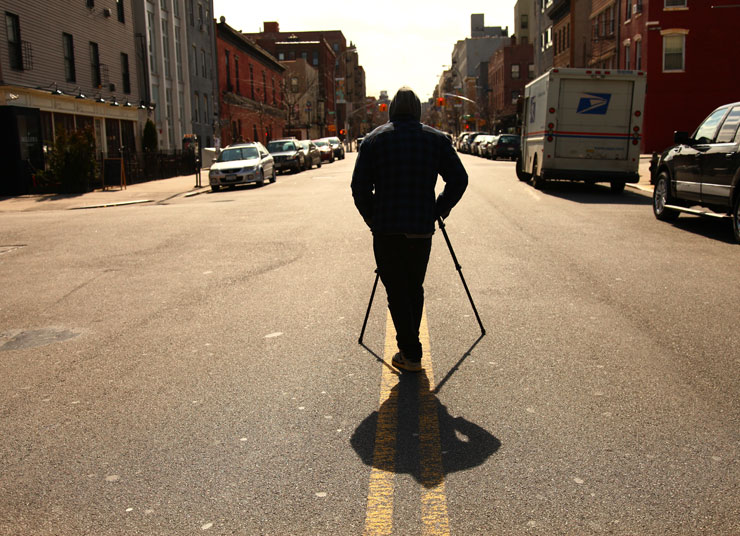
Cliff gets the law of the land. (photo © Jaime Rojo)
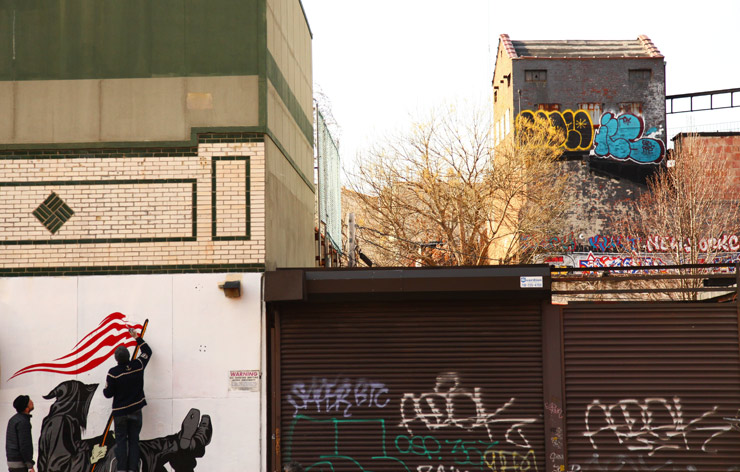
D*Face. Third mural in Williamsburg. (photo © Jaime Rojo)
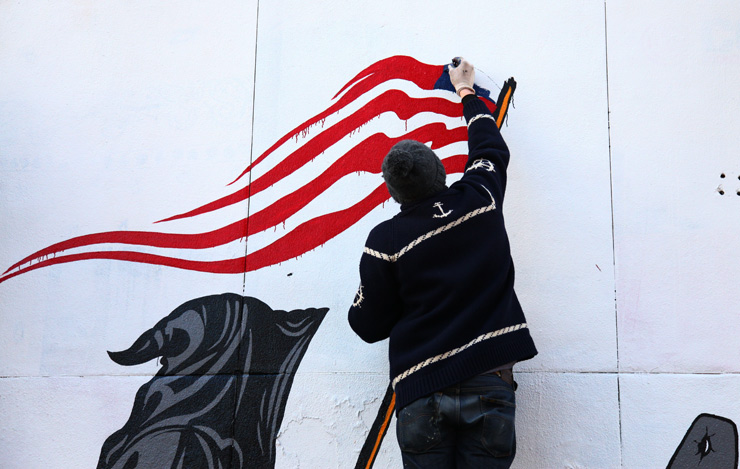
D*Face. Third mural in Williamsburg. (photo © Jaime Rojo)
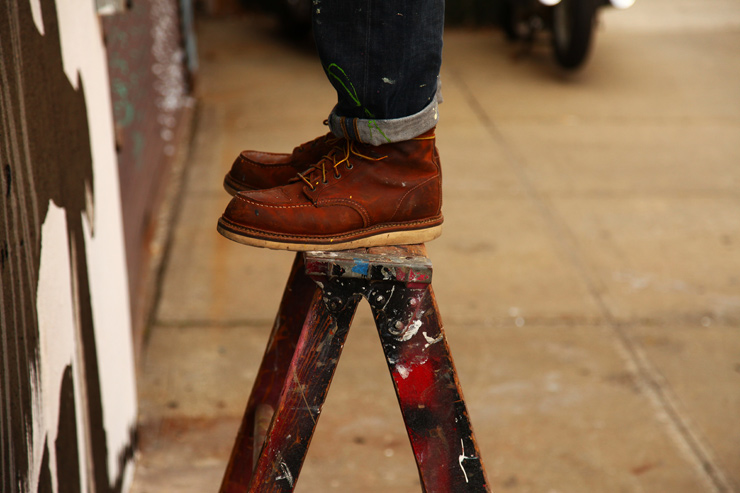
D*Face. Third mural in Williamsburg. (photo © Jaime Rojo)
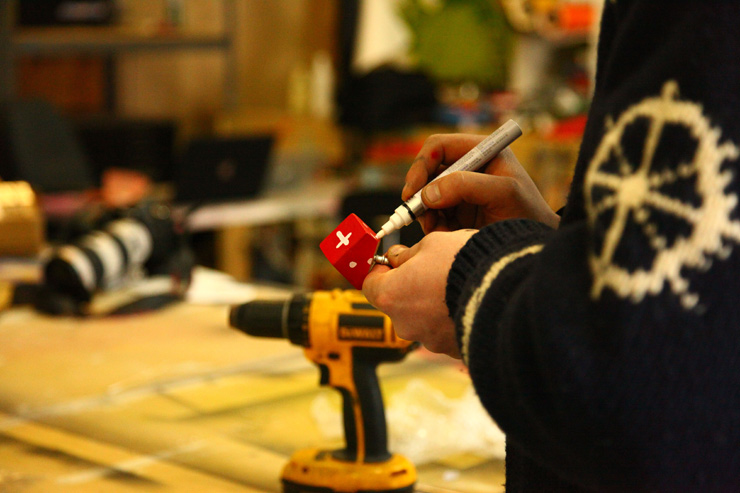
D*Face. Painting the three dimensional part of the mural in the studio. (photo © Jaime Rojo)
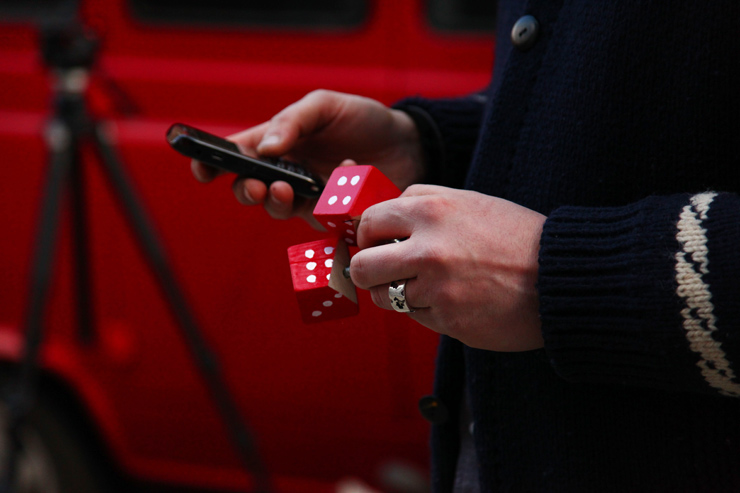
D*Face. Third mural in Williamsburg. (photo © Jaime Rojo)
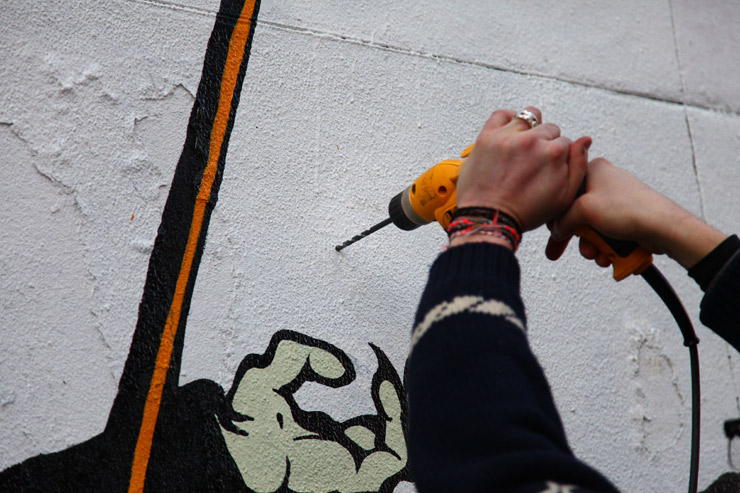
D*Face. Third mural in Williamsburg. (photo © Jaime Rojo)
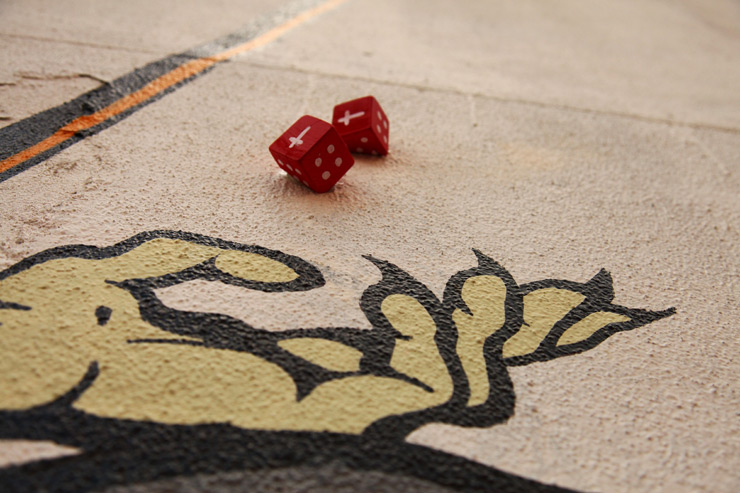
D*Face. Third mural in Williamsburg. (photo © Jaime Rojo)
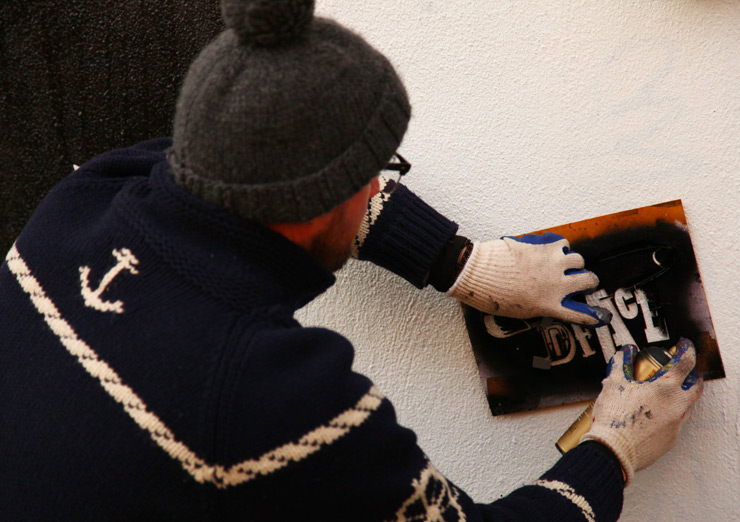
D*Face. Third mural in Williamsburg. (photo © Jaime Rojo)
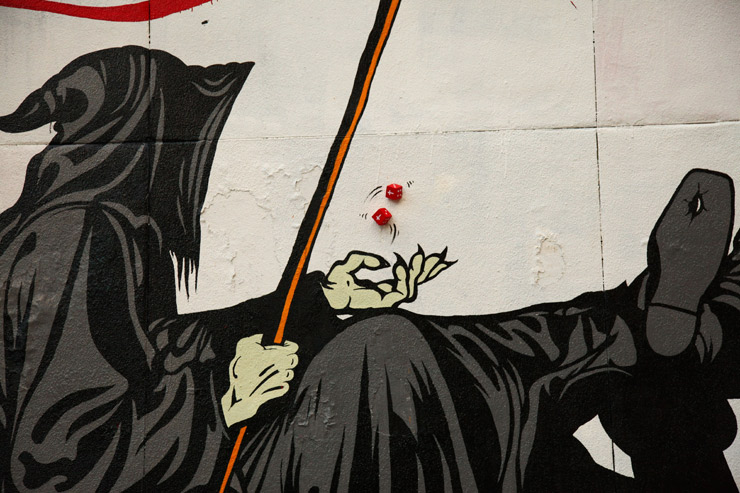
D*Face. Third mural in Williamsburg. (photo © Jaime Rojo)
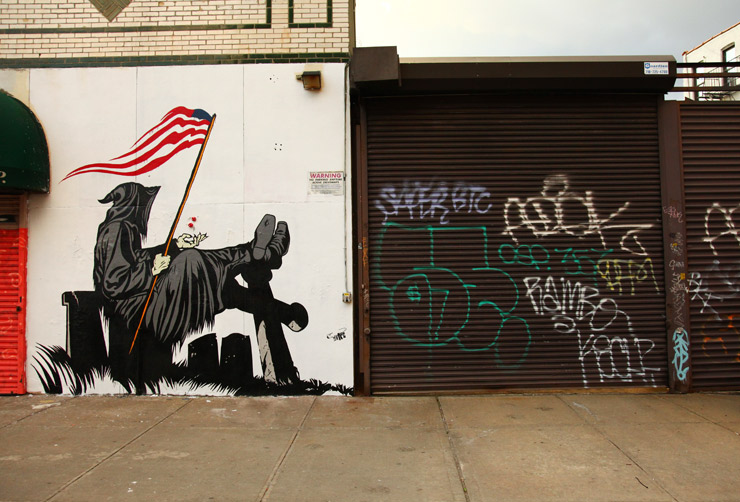
D*Face. Third mural in Williamsburg. (photo © Jaime Rojo)
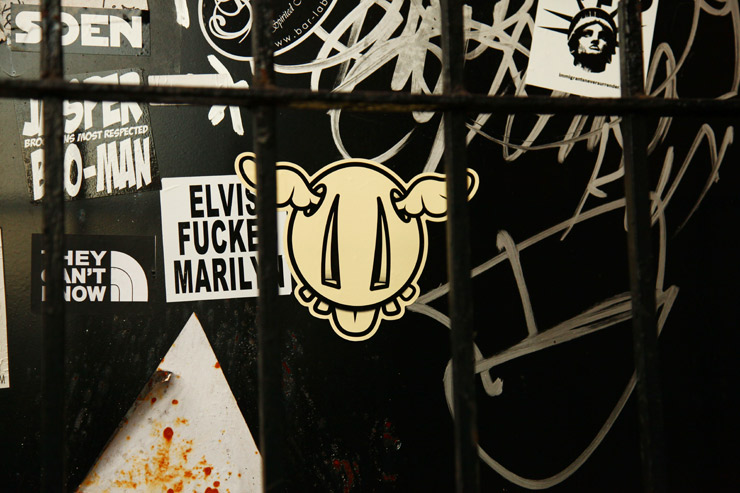
D*Face (photo © Jaime Rojo)
With special thanks to the Corey Helford Gallery for helping coordinate these murals and to Rob at Thunderdog Studios for hosting us on the Williamsburg sidewalk.
 BROOKLYN STREET ART LOVES YOU MORE EVERY DAY
BROOKLYN STREET ART LOVES YOU MORE EVERY DAY